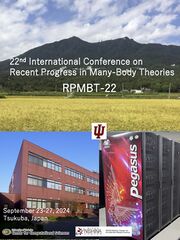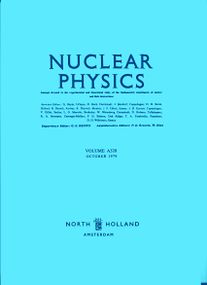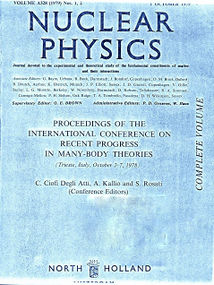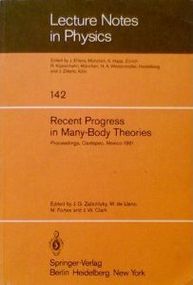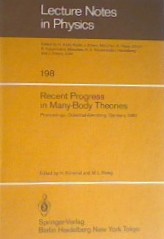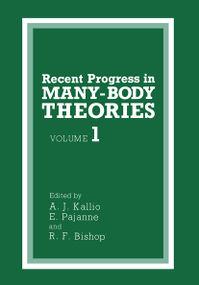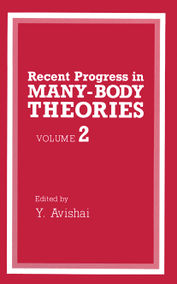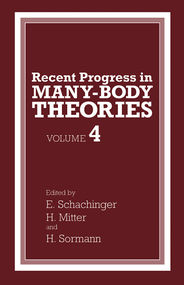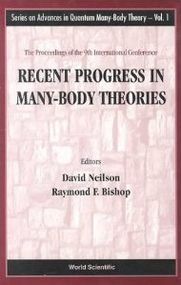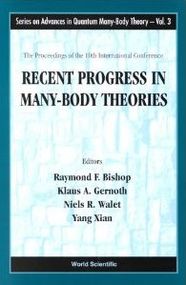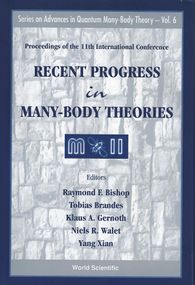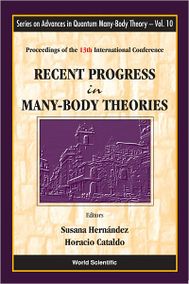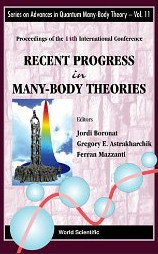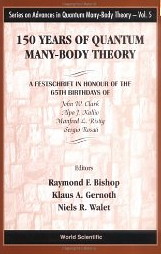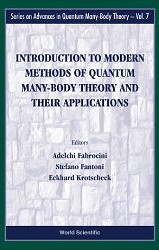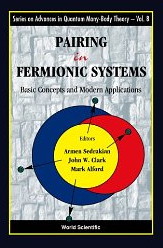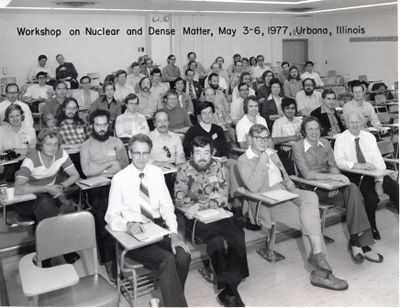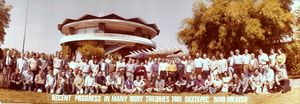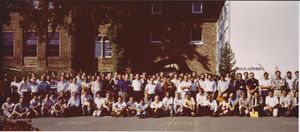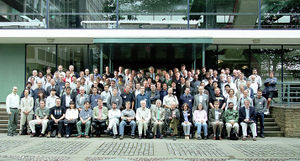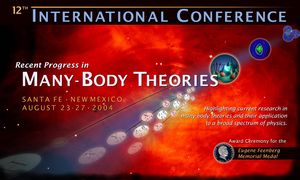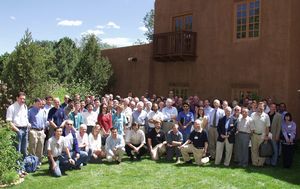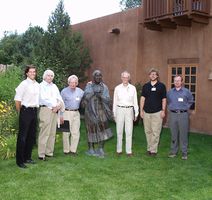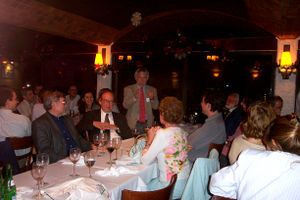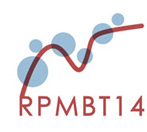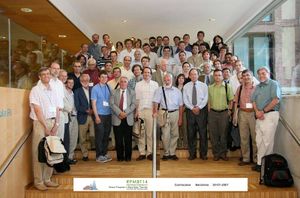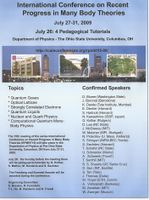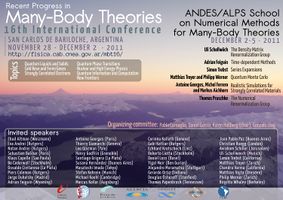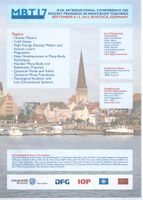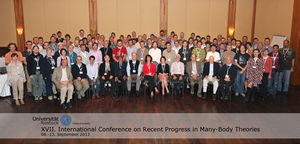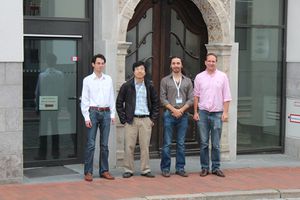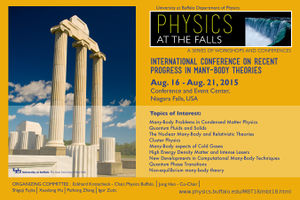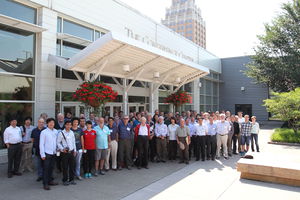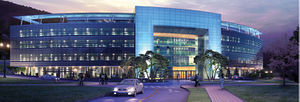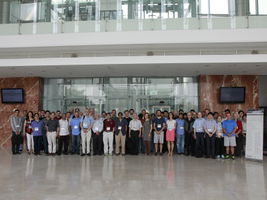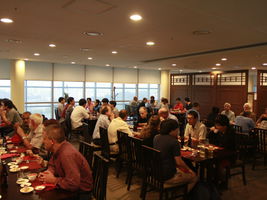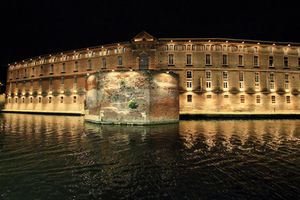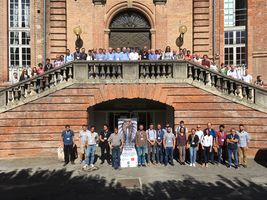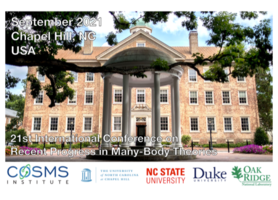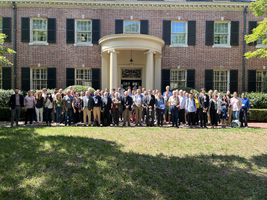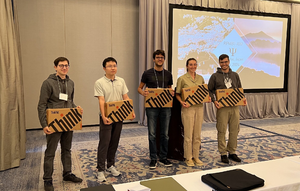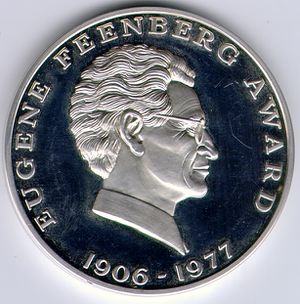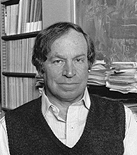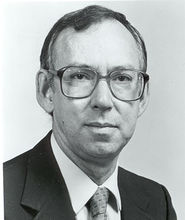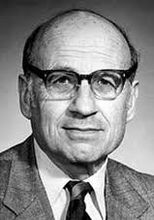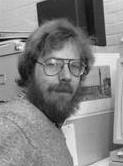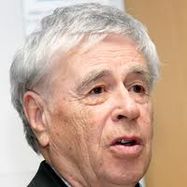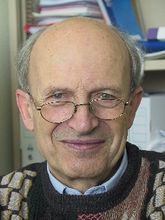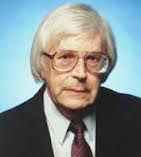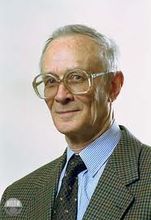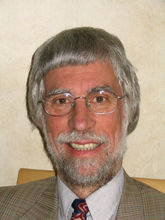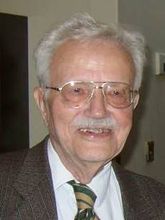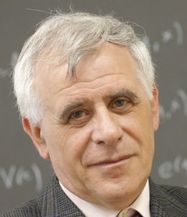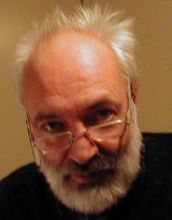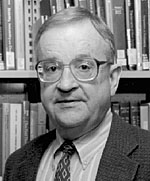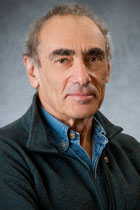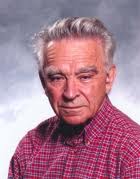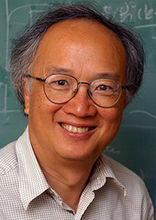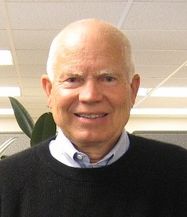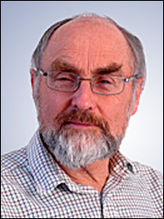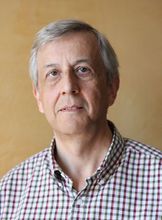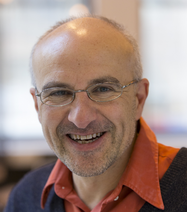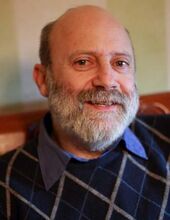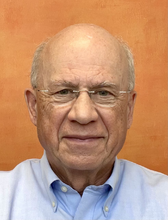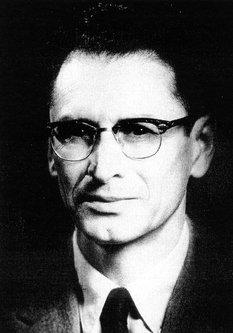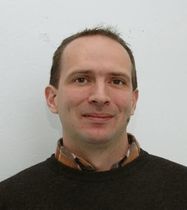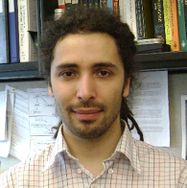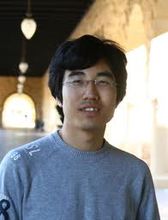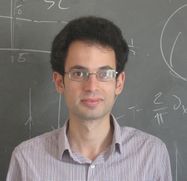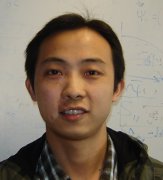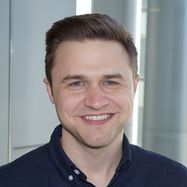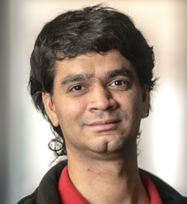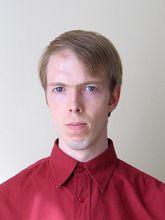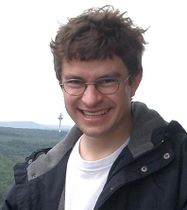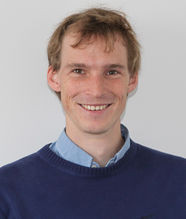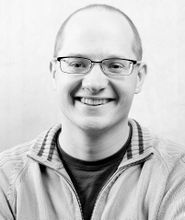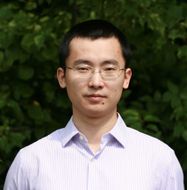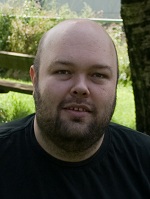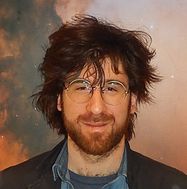Difference between revisions of "Recent Progress in Many Body Theories:Main Page"
| Line 1: | Line 1: | ||
| + | == '''International Conference Series on Recent Progress in Many-Body Theories (RPMBT)''' == | ||
| + | |||
| + | <!-- | ||
| + | {| | ||
| + | |[https://20thrpmbt.sciencesconf.org/resource/page?forward-action=page&forward-controller=resource&id=2&lang=en The 20th International Conference on Recent Progress in Many-Body-Theories (RPMBT-20)] took place during 9-13 September, 2019 in Toulouse, France. | ||
| + | |} | ||
| + | |||
| + | {| | ||
| + | |For more detailed information see [[#Next Meeting in the RPMBT Series|''below'']]. | ||
| + | |} | ||
| + | --> | ||
| + | |||
| + | |||
| + | The International Conference Series on ''Recent Progress in Many-Body Theories (RPMBT)'' | ||
| + | is now firmly established as the | ||
| + | premier series of international meetings in the field of many-body | ||
| + | physics. The conferences offer an ideal opportunity to recognize important | ||
| + | achievements and to showcase significant new results in various aspects of many-body physics. | ||
| + | The series acts too to highlight entirely new and rapidly evolving fields which are | ||
| + | themselves increasing both the breadth and depth of the discipline of | ||
| + | quantum many-body theory, which underpins so much of modern physics. | ||
| + | |||
| + | The RPMBT series is governed and overseen by an [[#RPMBT International Advisory Committee|''International Advisory Committee'']]. | ||
| + | The general format and style of the conferences in the series follow an accepted and well-developed | ||
| + | pattern, focusing on the development, refinement and important | ||
| + | applications of the techniques of quantum many-body theory. The intention | ||
| + | of the series has always been to cover in a broad and balanced fashion both the | ||
| + | entire spectrum of theoretical tools developed to tackle the quantum many-body | ||
| + | problem and their major fields of application. One of the main aims of the series | ||
| + | is to foster the exchange of ideas and techniques among physicists working in such | ||
| + | diverse areas of applications of many-body techniques as quantum fluids, condensed matter physics, nuclear and subnuclear | ||
| + | physics, quantum field theory, astrophysics, atomic and molecular physics, quantum chemistry, complex | ||
| + | systems, strongly correlated electronic systems, quantum magnetism, ultracold atoms, and quantum information theory. | ||
| + | |||
| + | __TOC__ | ||
| + | |||
| + | == '''Next Meeting in the RPMBT Series''' (23-27 September 2024) </span> == | ||
| + | |||
| + | {| | ||
| + | |The 22nd International Conference on Recent Progress in Many-Body-Theories [https://project.ccs.tsukuba.ac.jp/e/RPMBT22 (RPMBT-22)] will take place during the week 23-27 September 2024, in Tsukuba, Japan. | ||
| + | See [https://project.ccs.tsukuba.ac.jp/event/23/attachments/178/558/2nd-circular.pdf ''here''] for the 2nd Circular. | ||
| + | |||
| + | |rowspan="4"|[[File:Tsukuba-2.jpg |thumb|180px| [https://project.ccs.tsukuba.ac.jp/e/RPMBT22 ''RPMBT-22 Venue'' (Tsukuba, Japan)]]] | ||
| + | |- | ||
| + | |align="right"|See [[#Gallery of Past RPMBT Meetings|here]] for copies of previous ''Conference Posters''. | ||
| + | |- | ||
| + | |||
| + | |||
| + | {| | ||
| + | |The ''Local Organising Committee'' comprises: | ||
| + | :[mailto:nakatsukasa@nucl.ph.tsukuba.ac.jp Takashi Nakatsukasa (''Chair'')] (University of Tsukuba) | ||
| + | :Ryotaro Arita (University of Tokyo) | ||
| + | :Yasuhiro Hatsugai (University of Tsukuba) | ||
| + | :Atsushi Hosaka (Osaka University) | ||
| + | :Masaaki Kimura (RIKEN Nishina Center) | ||
| + | :Seiji Yunoki (RIKEN Center for Emergent Matter Science) | ||
| + | |- | ||
| + | |'''''Important Dates''''' are: | ||
| + | : ''Abstract submission deadline'': <s>30 June 2022</s> 15 July 2022 (extended) | ||
| + | : ''Deadline for nominations for the Feenberg Memorial Medal Award'': 15 February 2024 | ||
| + | : ''Deadline for nominations for the Kümmel Early Achievement Award'': 15 March 2024 | ||
| + | : ''Early registration fee deadline'': <s>30 June 2022</s> 15 July 2022 (extended) | ||
| + | |||
| + | : ''Welcome reception'': | ||
| + | : ''Conference opening'': 23 September 2024 | ||
| + | : ''Conference close'': 27 September 2024 | ||
| + | --> | ||
| + | |} | ||
| + | |||
| + | |||
| + | === <span style="color:#FF0000; background:#FFFF00">Announcement: Open Call for Nominations for the Feenberg Medal </span> === | ||
| + | |||
| + | <span style="background:#FFE4C4"> We are pleased to invite you to nominate candidates for the [[#Feenberg Memorial Medal|'''Feenberg Memorial Medal''']].</span> | ||
| + | |||
| + | <span style="background:#FFE4C4">Complete nominations - as indicated in the [[#Feenberg Award Rules|'''Rules''']] and guidelines below - should be submitted ('''''by email only please''''') <br /> | ||
| + | <span style="color:#FF0000"> '''''and by the deadline of 15th February 2024''''' </span> to:<br /> | ||
| + | [mailto:manousakis@fsu.edu Efstratios Manousakis] ( manousakis@fsu.edu ).</span> | ||
| + | |||
| + | The Feenberg Medal is awarded for work that is firmly established and | ||
| + | that can be demonstrated to have significantly advanced the field of | ||
| + | many-body physics. While such impact may be easier to demonstrate for | ||
| + | a nominee whose contributions span a considerable period of time than | ||
| + | for a nominee who has made a single important contribution, both cases | ||
| + | will be considered. The award may, in appropriate cases, be shared by | ||
| + | up to three persons for a single or closely linked body of work. | ||
| + | |||
| + | Upon submitting a nomination, it is important to include all of the | ||
| + | following: | ||
| + | # A letter of nomination summarizing the most important research contributions of the nominee. This letter should not be more than four pages in length. Up to three other letters of support may also be submitted at the same time. | ||
| + | # The nominee's complete CV. | ||
| + | # The nominee's publication list, citing the most significant 3 to 5 publications first, separated from the rest. | ||
| + | # A recommended citation, preferably of 30 words or less. | ||
| + | # The nominator's email address and telephone number. | ||
| + | |||
| + | In the event that you wish to coordinate the nomination of a candidate with up to three other individuals, please ensure that one nominator is responsible for the final assembly of the entire recommendation package and for its electronic submission in pdf-format as a single file. | ||
| + | |||
| + | Please submit all nomination materials as an email attachment in | ||
| + | pdf-file format to [mailto:manousakis@fsu.edu Efstratios Manousakis] ( manousakis@fsu.edu ) with the | ||
| + | subject heading: Feenberg Medal Nomination. An acknowledgement of receipt will be sent. | ||
| + | |||
| + | <span style="background:#E0FFFF">The decision of the Committee will be announced by 30th July 2024.</span> | ||
| + | |||
| + | <span style="background:#E0FFFF">Please note that:</span> | ||
| + | * <span style="background:#E0FFFF">proposals received AFTER 15th February 2024 will not be evaluated for this round.</span> | ||
| + | * <span style="background:#E0FFFF">complete proposals submitted in either of the last two rounds will be considered again in this round.</span> | ||
| + | |||
| + | <span style="background:#F5F5DC">The current members of the Selection Committee for this Award are: | ||
| + | : <span style="background:#F5F5DC">Efstratios Manousakis; Tallahassee, Florida, USA (Chair) | ||
| + | : <span style="background:#F5F5DC">Armen Sedrakian; Frankfurt, Germany | ||
| + | : <span style="background:#F5F5DC">Dieter Vollhardt; Augsburg, Germany </span> | ||
| + | |||
| + | <span style="background:#FFFACD">We warmly thank you in advance for your involvement. Your nomination enables our community to maintain the high standard set by previous recipients and ensures that the Feenberg Medal continues to play a significant role in recognizing outstanding accomplishments in many-body physics. <br /> | ||
| + | |||
| + | Efstratios Manousakis <br /> | ||
| + | Chair, Feenberg Medal Selection Committee</span> | ||
| + | |||
| + | === <span style="color:#FF0000; background:#FFFF00">Announcement: Open Call for Nominations for the Hermann Kümmel Early Achievement Award </span> === | ||
| + | |||
| + | <span style="background:#FFE4C4"> We are pleased to invite you to nominate candidates for the [[#Kümmel Early Achievement Award|'''Hermann Kümmel Early Achievement Award''']].</span> | ||
| + | |||
| + | <span style="background:#FFE4C4">Complete nominations - as indicated in the [[#Kümmel Award Rules|'''Rules''']] below - should be submitted ('''''by email only please''''') <br /> | ||
| + | <span style="color:#FF0000"> '''''and by the deadline of 15th March 2024''''' </span> to:<br /> | ||
| + | [mailto:anamaria.rey@gmail.com Ana María Rey] ( anamaria.rey@gmail.com ).</span> | ||
| + | |||
| + | The purpose of the Hermann Kümmel Early Achievement Award in Many-Body Physics is to encourage and reward excellence in the field of Quantum Many-Body Theory. The awardee will be selected on the basis of outstanding published work that has been recognised as comprising a significant advance in the field. Each candidate for the award must normally have received his or her PhD within a period of 6 years prior to the closing date for nominations. | ||
| + | |||
| + | Upon submitting a nomination, it is important to include all of the following: | ||
| + | # A brief description of the achievement contained in the work for which the award is to be considered, highlighting its importance to the field of quantum many-body theory and the original contributions of the nominee. | ||
| + | # A proposed citation for the award, preferably in no more than 35 words. | ||
| + | # An up-to-date curriculum vitae of the nominee. | ||
| + | # A list of up to 3 relevant refereed publications that describe the work. | ||
| + | # No more than 3 letters of support. | ||
| + | # The nominator's email address and telephone number. | ||
| + | |||
| + | In the event that you wish to coordinate the nomination of a candidate with up to three other individuals, please ensure that one nominator is responsible for the final assembly of the entire recommendation package and for its electronic submission in pdf-format as a single file. | ||
| + | |||
| + | Please submit all nomination materials as an email attachment in pdf-file format to Ana María Rey ( anamaria.rey@gmail.com ) with the subject heading: Kümmel Award Nomination. An acknowledgement of receipt will be sent. | ||
| + | |||
| + | <span style="background:#E0FFFF">The decision of the Committee will be announced by 30th June 2024.</span> | ||
| + | |||
| + | <span style="background:#E0FFFF">Please note that:</span> | ||
| + | * <span style="background:#E0FFFF">proposals received AFTER 15th March 2024 will not be evaluated for this round and,</span> | ||
| + | * <span style="background:#E0FFFF">due to the nature of this award nomination files will NOT be kept for future consideration after this evaluation. Similarly, files submitted for the last award will not be considered for this round.</span> | ||
| + | |||
| + | <span style="background:#F5F5DC">The current members of the Selection Committee for this Award are: | ||
| + | : <span style="background:#F5F5DC">Ana María Rey; Boulder, Colorado, USA (Chair) | ||
| + | : <span style="background:#F5F5DC">Jordi Boronat; Barcelona, Spain | ||
| + | : <span style="background:#F5F5DC">Alessandro Lovato; Lemont, Illinois, USA </span> | ||
| + | |||
| + | <span style="background:#FFFACD">We warmly thank you for your cooperation and enthusiasm to encourage young physicists into the field of Quantum Many-Body Theory. <br /> | ||
| + | |||
| + | Ana María Rey <br /> | ||
| + | Chair, Kümmel Award Selection Committee</span> | ||
| + | |||
| + | == '''Organisation of the RPMBT Conference Series and Allied Activities''' == | ||
| + | |||
| + | The governing body that oversees all of the activities of the RPMBT Series of conferences and allied activities in the general field of quantum many-body theory is its [[#RPMBT International Advisory Committee|''International Advisory Committee (IAC)'']]. The IAC is responsible for selecting the range of [[#Topics Covered by the RPMBT Series|''Topics'']] that is covered by the RPMBT series. One of the primary duties of the IAC is to select the venue and the ''Principal Organiser(s)'' of the next meeting in the Series, who will in turn act as Chair(s) of the ''Local Organising Committee'' for that Conference. The IAC is also responsible for arranging the eventual publication of any [[#Publication of the RPMBT Conference Proceedings|''Conference Proceedings'']]. The IAC has also arranged with World Scientific Publishing Co. to publish an ongoing [[#Series on Advances in Quantum Many-Body Theory (SAQMBT)|''Series on Advances in Quantum Many-Body Theory'']]. | ||
| + | |||
| + | === RPMBT International Advisory Committee === | ||
| + | |||
| + | The current composition of the ''International Advisory Committee'' is: | ||
| + | * [mailto:cbatist2@utk.edu Cristian D. Batista] (Knoxville, Tennessee, USA) | ||
| + | * [mailto:raymond.bishop@manchester.ac.uk Raymond F. Bishop] (Manchester, UK) | ||
| + | * [mailto:jordi.boronat@upc.edu Jordi Boronat (''Treasurer'')] (Barcelona, Spain) | ||
| + | * [mailto:chin@phys.tamu.edu Siu A. Chin] (College Station, Texas, USA) | ||
| + | * [mailto:jwc@howdy.wustl.edu John W. Clark (''Honorary President'')] (St. Louis, Missouri, USA) | ||
| + | * [mailto:bpdas.iia@gmail.com Bhanu P. Das] (Kolkata, India) | ||
| + | * [mailto:drut@email.unc.edu Joaquín E. Drut] (Chapel Hill, North Carolina, USA) | ||
| + | * [mailto:Davide.Galli@unimi.it Davide Galli] (Milan, Italy) | ||
| + | * [mailto:jonghan@buffalo.edu Jong Han] (Buffalo, New York, USA) | ||
| + | * [mailto:karenhallberg@gmail.com Karen Hallberg] (Bariloche, Argentina) | ||
| + | * [mailto:morten.hjorth-jensen@fys.uio.no Morten Hjorth-Jensen] (Oslo, Norway) | ||
| + | * [mailto:lovato@alcf.anl.gov Alessandro Lovato] (Lemont, Illinois, USA) | ||
| + | * [mailto:stratos@physics.fsu.edu Efstratios Manousakis] (Tallahassee, Florida, USA) | ||
| + | * [mailto:nakatsukasa@nucl.ph.tsukuba.ac.jp Takashi Nakatsukasa] (Tsukuba, Japan) | ||
| + | * [mailto:dneilson@ftml.net David Neilson] (Antwerp, Belgium) | ||
| + | * [mailto:ortizg@indiana.edu Gerardo Ortiz] (''Chair'') (Bloomington, Indiana, USA) | ||
| + | * [mailto:heidi.reinholz@uni-rostock.de Heidi Reinholz (''Secretary'')] (Rostock, Germany) | ||
| + | * [mailto:arey@jilau1.colorado.edu Ana María Rey] (Boulder, Colorado, USA) | ||
| + | * [mailto:sedrakian@fias.uni-frankfurt.de Armen Sedrakian] (Frankfurt, Germany) | ||
| − | == | + | === Topics Covered by the RPMBT Series === |
| − | + | The scientific program of all RPMBT conferences covers not only traditional topics in | |
| − | + | many-body physics but also other frontier areas of current interest. Traditionally, | |
| − | + | one or two areas of special interest to the ''Principal Local Organiser'' selected by | |
| + | the IAC, and the ''Local Organising Committee'' which he/she chairs, are also highlighted | ||
| + | at each meeting.<br /> | ||
| + | Topics include: | ||
| + | * Quantum Fluids, Superfluids, and Solids | ||
| + | * Ultracold Bose and Fermi Gases | ||
| + | * Nuclear and Subnuclear Physics | ||
| + | * Strongly Correlated Electronic Systems in Condensed Matter Physics | ||
| + | * Quantum Phase Transitions and Critical Phenomena | ||
| + | * Quantum Magnetism | ||
| + | * Computational Quantum Many-Body Methods | ||
| + | * Quantum Chemistry, Atomic and Molecular Physics | ||
| + | * Quantum Information and Computation | ||
| + | * Non-Equilibrium Many-Body Phenomena | ||
| + | * Nanostructures and Quantum Transport | ||
| + | * Complex Systems | ||
| + | * New Frontiers | ||
| + | Note that not all topics are covered at each meeting. | ||
| + | === <span style="color:#FF0000; background:#FFFF00">Announcement: Open Call for Bids to Host a Future RPMBT Conference </span> === | ||
| − | + | Those wishing to host a future conference in the RPMBT Series should bear in mind that | |
| + | the conferences are usually held every two years, on a three-meeting rotation sequence that sees the venue cycle between | ||
| + | Europe, North America and Elsewhere in the World. Bidders should contact the [[#RPMBT International Advisory Committee|'''''Chair | ||
| + | and/or Secretary of the IAC''''']] in the first instance, with the aim of addressing or making further inquiries about all or most of the points on the | ||
| + | [[#Checklist of points to address in a bid to host an RPMBT conference|'''''Checklist''''']] below. For initial planning purposes | ||
| + | the IAC suggests to think in terms of a 5-day meeting, including a half-day excursion and a conference banquet, for roughly 120 ± 10 registered | ||
| + | participants, as has been the usual format of meetings in the Series. | ||
| − | + | ==== Checklist of Points to Address in a Bid to Host an RPMBT Conference ==== | |
| − | |||
| − | |||
| − | |||
| − | |||
| − | |||
| − | |||
| − | |||
| − | |||
| − | |||
| − | |||
| − | |||
| − | |||
| − | |||
| − | |||
| − | |||
| − | |||
| − | |||
| − | |||
| − | |||
| − | |||
| − | |||
| − | |||
| + | # Possible dates and venue. | ||
| + | # Expected costs and budget. | ||
| + | # Range of accommodation possibilities (e.g., hotels, student dormitories) and anticipated costs for attendees. | ||
| + | # Any special local points of interest that would make the venue stand out or be particularly attractive to participants? | ||
| + | # Details of any possible sources of financial or other support from within the university or from external agencies. | ||
| + | # Level of local interest and possible involvement from faculty members within the host organizer's university or other universities or laboratories close by, naming those who might be on the Local Organizing Committee and who would be Chair. | ||
| + | # Anticipated level of any registration fee to be charged. | ||
| + | # Anticipated level of support to be offered to speakers (e.g., the IAC would expect all or some of: registration fee waived, local accommodation and/or subsistence covered, all or partial travel support, etc.). At the very least, registration fees for speakers should be waived, and local subsistence offered to those who need it. In the past, many organizers have also often offered (at least partial) travel support to speakers. FULL costs will also be expected to be covered for the Feenberg and Kümmel Prizewinners (if needed). | ||
| + | # How many speakers? Lengths of talks? All the same length or some "keynote speakers" given more time to introduce a subject more broadly? Any parallel sessions envisaged (-- be aware that these have generally been strongly discouraged in the past)? Poster sessions (-- generally encouraged)? Any other new ideas for format of meeting? | ||
| + | # Would you wish to have any "special focus" for part of the meeting, e.g., to cover any "special topics" of local or "hot-topic" interest? Would there be any local pressure to do so, to make the meeting viable? | ||
| + | # Any other special features that you could offer or would like to suggest for discussion by the IAC to make your meeting or your venue distinctive? Possibilities might be the arrangement of a "Student Day (or Days)" before the meeting"; a Summer School before or after the Conference, or some special session or event during the conference hooked to a local "center of excellence" or some such thing; or some other novel feature to make the meeting distinctive and/or attractive to a wider audience. Be aware that such "special events" as part of a meeting or associated with it can also often be attractive to funding bodies. | ||
| + | # Arrangements for Session for the Feenberg and Kümmel awards will need to be made. | ||
| + | # Be aware that [[#Publication of the RPMBT Conference Proceedings|'''''Proceedings''''']] of the meeting will be published (presently through J. Phys. Conf. Ser.) -- organizer needs to agree in advance to liaise with publisher and arrange all details, including payment of costs, to ensure prompt publication. | ||
| − | == | + | === Publication of the RPMBT Conference Proceedings === |
| + | |||
| + | * The Proceedings of the first conference in the series, RPMBT-1, were published as Issues 1 and 2 of Volume '''328''' of the journal [http://www.journals.elsevier.com/nuclear-physics-a/ ''Nuclear Physics A'']. | ||
| + | * For the next two meetings, RPMBT-2 and RPMBT-3, the Proceedings were published as separate stand-alone volumes in the Springer series [http://www.springer.com/series/5304 ''Lecture Notes in Physics'']. | ||
| + | * No Proceedings were published for the fourth meeting, RPMBT-4. | ||
| + | * For the next four meetings, RPMBT-5 to RPMBT-8 inclusive, the Proceedings were published by Plenum Press as separate volumes in a series entitled ''Recent Progress in Many-Body Theories''. | ||
| + | * After RPMBT-8 the ''International Advisory Committee (IAC)'' of the RPMBT Series agreed with World Scientific to create a new series of volumes entitled [[#Series on Advances in Quantum Many-Body Theory (SAQMBT)|''Series on Advances in Quantum Many-Body Theory (SAQMBT)'']], which would include the Proceedings of future RPMBT Conferences as well as other stand-alone volumes. The Proceedings of the next six meetings, RPMBT-9 to RPMBT-14 inclusive, were published in this Series. The Proceedings of three of these meetings, RPMBT-11 to RPMBT-13 inclusive, were also co-published as separate issues of the journal ''International Journal of Modern Physics B''. | ||
| + | * No proceedings were published for the next two meetings, RPMBT-15 and RPMBT-16. | ||
| + | * Beginning with RPMBT-17 the Proceedings are published as issues of the open-access [http://iopscience.iop.org/1742-6596/ ''Journal of Physics: Conference Series'']. | ||
| + | |||
| + | |||
| + | <gallery widths=233px heights=285px perrow=5> | ||
| + | File:RPMBT-1 Proceedings.jpg|<p style="text-align: center;"> [http://www.sciencedirect.com/science/journal/03759474/328/1-2 RPMBT-1 Proceedings </p>] | ||
| + | File:RPMBT-1 Proceedings-alt.jpg|<p style="text-align: center;"> [http://www.sciencedirect.com/science/journal/03759474/328/1-2 RPMBT-1 Proceedings </p>] | ||
| + | File:RPMBT-2 Proceedings.jpg|<p style="text-align: center;"> [http://www.springer.com/physics/particle+and+nuclear+physics/book/978-3-540-10710-1 RPMBT-2 Proceedings </p>] | ||
| + | File:RPMBT-3 Proceedings.jpg|<p style="text-align: center;"> [http://www.springer.com/physics/particle+and+nuclear+physics/book/978-3-540-12924-0 RPMBT-3 Proceedings </p>] | ||
| + | File:RPMBT-5 Proceedings.jpg|<p style="text-align: center;"> [http://www.springer.com/materials/characterization+%26+evaluation/book/978-0-306-42830-2 RPMBT-5 Proceedings </p>] | ||
| + | File:RPMBT-6 Proceedings.jpg|<p style="text-align: center;"> [http://www.springer.com/physics/particle+and+nuclear+physics/book/978-0-306-43705-2 RPMBT-6 Proceedings </p>] | ||
| + | File:RPMBT-7 Proceedings.jpg|<p style="text-align: center;"> [http://www.springer.com/physics/particle+and+nuclear+physics/book/978-0-306-44246-9 RPMBT-7 Proceedings </p>] | ||
| + | File:RPMBT-8 Proceedings.jpg|<p style="text-align: center;"> [http://www.springer.com/physics/particle+and+nuclear+physics/book/978-0-306-45103-4 RPMBT-8 Proceedings </p>] | ||
| + | File:SAQMBT_Vol.1.jpg|<p style="text-align: center;"> RPMBT-9 Proceedings </p> | ||
| + | File:SAQMBT_Vol.3.jpg|<p style="text-align: center;"> [http://www.worldscientific.com/worldscibooks/10.1142/4434 RPMBT-10 Proceedings </p>] | ||
| + | File:SAQMBT_Vol.6.jpg|<p style="text-align: center;"> [http://www.worldscientific.com/worldscibooks/10.1142/4909 RPMBT-11 Proceedings </p>] | ||
| + | File:SAQMBT_Vol.9.jpg|<p style="text-align: center;"> [http://www.worldscientific.com/worldscibooks/10.1142/6210 RPMBT-12 Proceedings </p>] | ||
| + | File:SAQMBT_Vol.10.jpg|<p style="text-align: center;"> [http://www.worldscientific.com/worldscibooks/10.1142/6245 RPMBT-13 Proceedings </p>] | ||
| + | File:SAQMBT_Vol.11.jpg|<p style="text-align: center;"> [http://www.worldscientific.com/worldscibooks/10.1142/6690 RPMBT-14 Proceedings </p>] | ||
| + | </gallery> | ||
| + | |||
| + | === Series on Advances in Quantum Many-Body Theory (SAQMBT) === | ||
| + | |||
| + | The [http://www.worldscientific.com/series/saqmbt ''Series on Advances in Quantum Many-Body Theory (SAQMBT)''] is published by World Scientific Publishing Co. Pte. Ltd. (Singapore), under an agreement with the IAC of the RPMBT Series of Conferences. The IAC selects the [[#SAQMBT Series Editorial Board|''Series Editorial Board'']], who in turn are responsible for the commission of individual [[#Current Volumes in the SAQMBT Series|''Volumes'']] in the Series. | ||
| + | |||
| + | ==== <span style="color:#FF0000; background:#FFFF00">Announcement: Open Call for Suggested Future Volumes in the Series</span> ==== | ||
| + | |||
| + | <span style="background:#FFE4C4"> If you are interested in publishing a future volume in the SAQMBT Series, the [[#SAQMBT Series Editorial Board|''Series Editorial Board'']] invites you to contact the [mailto:raymond.bishop@manchester.ac.uk Editor-in-Chief] to discuss your ideas informally in the first place.</span> | ||
| + | |||
| + | ==== SAQMBT Series Editorial Board ==== | ||
| + | |||
| + | The current members of the ''SAQMBT Series Editorial Board'' are: | ||
| + | * [mailto:raymond.bishop@manchester.ac.uk Raymond F. Bishop (Chair, Editor-in-Chief)] (Manchester, UK) | ||
| + | * [mailto:jordi.boronat@upc.edu Jordi Boronat (Editor)] (Barcelona, Spain) | ||
| + | * [mailto:campbell@umn.edu Charles E. Campbell (Editor)] (Minneapolis, Minnesota, USA) | ||
| + | * [mailto:jwc@howdy.wustl.edu John W. Clark (Editor)] (St. Louis, Missouri, USA) | ||
| + | |||
| + | ==== Current Volumes in the SAQMBT Series ==== | ||
| + | |||
| + | Published volumes in the ''SAQMBT Series'' include: | ||
| + | {| border="1" class="wikitable" | ||
| + | | align="center" style="background:#f0f0f0;"|'''VOLUME ''' | ||
| + | | align="center" style="background:#f0f0f0;"|'''PUBLICATION YEAR''' | ||
| + | | align="center" style="background:#f0f0f0;"|'''TITLE''' | ||
| + | | align="center" style="background:#f0f0f0;"|'''AUTHORS''' | ||
| + | | align="center" style="background:#f0f0f0;"|'''NUMBER OF PAGES''' | ||
| + | | align="center" style="background:#f0f0f0;"|'''ISBN''' | ||
| + | |- | ||
| + | |- | ||
| + | | '''Vol. 1'''||align="center"|1998||'''''Recent Progress in Many-Body Theories''''' (''The Proceedings of the 9th International Conference''; Sydney, Australia, 21 - 25 July 1997)||David Neilson and Raymond F. Bishop (eds.)||pp. xxx+516||978-981-02-3369-3 (hardcover) | ||
| + | |- | ||
| + | | [http://www.worldscientific.com/worldscibooks/10.1142/4434 '''Vol. 3''']||align="center"|2000||'''''Recent Progress in Many-Body Theories''''' (''The Proceedings of the 10th International Conference''; Seattle, USA, 10 – 15 September 1999)||Raymond F. Bishop, Klaus A. Gernoth, Niels R. Walet, and Yang Xian (eds.)||pp. xviii+491||978-981-02-4318-0 (hardcover) / 978-981-279-275-4 (ebook) | ||
| + | |- | ||
| + | | [http://www.worldscientific.com/worldscibooks/10.1142/4718 '''Vol. 4''']||align="center"|2002||'''''Microscopic Approaches To Quantum Liquids In Confined Geometries'''''||Eckhard Krotscheck and Jesus Navarro (eds.)||pp. xii+422||978-981-02-4640-2 (hardcover) / 978-981-277-847-5 (ebook) | ||
| + | |- | ||
| + | | [http://www.worldscientific.com/worldscibooks/10.1142/4794 '''Vol. 5''']||align="center"|2001||'''''150 Years Of Quantum Many-Body Theory''''' (''A Festschrift in Honour of the 65th Birthdays of John W. Clark, Alpo J. Kallio, Manfred L. Ristig, and Sergio Rosati''; UMIST, Manchester, UK, 10 – 14 July 2000)||Raymond F. Bishop, Klaus A. Gernoth, and Niels R. Walet (eds.)||pp. xii+345||978-981-02-4730-0 (hardcover) / 978-981-279-976-0 (ebook) | ||
| + | |- | ||
| + | | [http://www.worldscientific.com/worldscibooks/10.1142/4909 '''Vol. 6''']||align="center"|2002||'''''Recent Progress In Many-Body Theories''''' (''The Proceedings of the 11th International Conference''; Manchester, UK, 9 – 13 July 2001)||Raymond F. Bishop, Tobias Brandes, Klaus A. Gernoth, Niels R. Walet, and Yang Xian (eds.)||pp. xix+499||978-981-02-4888-8 (hardcover) / 978-981-277-784-3 (ebook) | ||
| + | |- | ||
| + | | [http://www.worldscientific.com/worldscibooks/10.1142/5023 '''Vol. 7''']||align="center"|2002||'''''Introduction To Modern Methods Of Quantum Many-Body Theory And Their Applications'''''||Adelchi Fabrocini, Stefano Fantoni, and Eckhard Krotscheck (eds.)||pp. xii+413||978-981-238-069-2 (hardcover) / 978-981-277-707-2 (ebook) | ||
| + | |- | ||
| + | | [http://www.worldscientific.com/worldscibooks/10.1142/6194 '''Vol. 8''']||align="center"|2006||'''''Pairing in Fermionic Systems:''''' ''Basic Concepts and Modern Applications''||Armen Sedrakian, John W Clark, and Mark Alford (eds.)||pp. x+285||978-981-256-907-3 (hardcover) / 978-981-277-304-3 (ebook) | ||
| + | |- | ||
| + | | [http://www.worldscientific.com/worldscibooks/10.1142/6210 '''Vol. 9''']||align="center"|2006||'''''Recent Progress In Many-Body Theories''''' (''The Proceedings of the 12th International Conference''; Santa Fe, New Mexico, 23 – 27 August 2004)||Joseph A Carlson and Gerardo Ortiz (eds.)||pp. xiv+270||978-981-256-957-8 (hardcover) / 978-981-277-289-3 (ebook) | ||
| + | |- | ||
| + | | [http://www.worldscientific.com/worldscibooks/10.1142/6245 '''Vol. 10''']||align="center"|2006||'''''Recent Progress In Many-Body Theories''''' (''The Proceedings of the 13th International Conference''; Buenos Aires, Argentina, 5 – 9 December 2005)||Susana Hernández and Horacio Cataldo (eds.)||pp. xiii+408||978-981-270-035-3 (hardcover) / 978-981-277-278-7 (ebook) | ||
| + | |- | ||
| + | | [http://www.worldscientific.com/worldscibooks/10.1142/6690 '''Vol. 11''']||align="center"|2008||'''''Recent Progress In Many-Body Theories''''' (''The Proceedings of the 14th International Conference''; Barcelona, Spain, 16 – 20 July 2007)||Jordi Boronat, Gregory Astrakharchik, and Ferran Mazzanti (eds.)||pp. xviii+439||978-981-277-987-8 (hardcover) / 978-981-277-988-5 (ebook) | ||
| + | |- | ||
| + | |} | ||
| + | <gallery widths=233px heights=285px perrow=5> | ||
| + | File:SAQMBT_Vol.1.jpg|<p style="text-align: center;"> Volume 1 </p> | ||
| + | File:SAQMBT_Vol.3.jpg|<p style="text-align: center;"> [http://www.worldscientific.com/worldscibooks/10.1142/4434 Volume 3 </p>] | ||
| + | File:SAQMBT_Vol.4.jpg|<p style="text-align: center;"> [http://www.worldscientific.com/worldscibooks/10.1142/4718 Volume 4 </p>] | ||
| + | File:SAQMBT_Vol.5.jpg|<p style="text-align: center;"> [http://www.worldscientific.com/worldscibooks/10.1142/4794 Volume 5 </p>] | ||
| + | File:SAQMBT_Vol.6.jpg|<p style="text-align: center;"> [http://www.worldscientific.com/worldscibooks/10.1142/4909 Volume 6 </p>] | ||
| + | File:SAQMBT_Vol.7.jpg|<p style="text-align: center;"> [http://www.worldscientific.com/worldscibooks/10.1142/5023 Volume 7 </p>] | ||
| + | File:SAQMBT_Vol.8.jpg|<p style="text-align: center;"> [http://www.worldscientific.com/worldscibooks/10.1142/6194 Volume 8 </p>] | ||
| + | File:SAQMBT_Vol.9.jpg|<p style="text-align: center;"> [http://www.worldscientific.com/worldscibooks/10.1142/6210 Volume 9 </p>] | ||
| + | File:SAQMBT_Vol.10.jpg|<p style="text-align: center;"> [http://www.worldscientific.com/worldscibooks/10.1142/6245 Volume 10 </p>] | ||
| + | File:SAQMBT_Vol.11.jpg|<p style="text-align: center;"> [http://www.worldscientific.com/worldscibooks/10.1142/6690 Volume 11 </p>] | ||
| + | </gallery> | ||
| + | == '''The Development of Quantum Many-Body Theory''' == | ||
| + | Quantum many-body theory as a discipline in its own right dates largely from | ||
| + | the 1950's, and is hence in many senses already a mature subject. Despite this | ||
| + | apparent maturity the field remains vibrant and active, vigorous and exciting, vital | ||
| + | and important. Indeed, the successes, importance and vitality of the field as | ||
| + | the 20th century drew to its close, were very | ||
| + | clearly recognized, for example, by the sharing of the 1998 Nobel Prizes in both Physics and | ||
| + | Chemistry by the many-body theorists Robert Laughlin for his work on the fractional quantum Hall | ||
| + | effect, Walter Kohn for his development of the density-functional theory, and John | ||
| + | Pople for his development of computational methods in quantum chemistry. | ||
| + | Earlier Nobel Laureates who obtained their awards for work in quantum many-body | ||
| + | physics include: Lev Landau (1962), John Bardeen, Leon Cooper, and John Robert Schrieffer (1972), | ||
| + | Philip Anderson, Sir Nevill Mott, and John van Vleck (1977). More recent laureates | ||
| + | have been Alexei Abrikosov, Vitaly Ginzburg, and Tony Leggett (2003) for their pioneering | ||
| + | contributions to the theory of superconductors and superfluids. Most recently, in 2016, | ||
| + | David Thouless, Duncan Haldane and Michael Kosterlitz shared the prize for their | ||
| + | theoretical discoveries of topological phase transitions and topological phases of matter. | ||
| + | It is impossible to date the precise origin of quantum many-body theory as a | ||
| + | subject in its own right. Nevertheless, even if 1958 is not the actual year of its birth, | ||
| + | that year marks a particularly significant milestone in its development. Although | ||
| + | much important work was done earlier, even considerably earlier, that single year | ||
| + | and the few around it saw the publication of a large number of seminal papers | ||
| + | by such forefathers of the field as Eugene Feenberg, Richard Feynman, Murray | ||
| + | Gell-Mann, Jeffrey Goldstone, Lev Landau, David Pines and many, many others. Possibly the | ||
| + | most important of those others is Keith Brueckner, whose path-breaking work dates | ||
| + | from even earlier in the 1950's. | ||
| − | + | The [[#History of the RPMBT Series|history]] (and immediate | |
| + | [[#Pre-History of the RPMBT Series|pre-history]]) of the series itself provides a mirror in which | ||
| + | to view later developments in the subject, as we discuss below. | ||
| − | + | Today, quantum many-body theory stands as one of the three great pillars | |
| − | + | of modern theoretical physics, together with quantum field theory and statistical | |
| − | + | physics. While quantum many-body theory was born largely out of quantum field | |
| + | theory in the 1950's, the two subjects thereafter have led rather separate lives. In | ||
| + | recent years, however, the boundaries between them have again become eroded. | ||
| + | Indeed, many papers in recent proceedings volumes of the RPMBT series concern themselves very productively with | ||
| + | topics on this boundary. There is little doubt that the barriers between all three | ||
| + | fields will increasingly be surmounted in the coming years, to their mutual advantage, | ||
| + | leading to an increasing commonality of both approach and areas of discourse. | ||
| − | == | + | == '''Pre-History of the RPMBT Series''' == |
| − | + | In the 1970's the applications of quantum many-body theory in nuclear physics were becoming sufficiently varied and sophisticated that a number of conferences on the subject were organized. With hindsight it is clear that these formed the impetus to the later development of the conference series on ''Recent Progress in Many-Body Theories (RPMBT).'' The most important of these early meetings, which can be regarded in many ways as having been RPMBT-0, is the 1972 conference on ''The Nuclear Many-Body Problem'' | |
| − | + | organized by F. Calogero and C. Ciofi degli Atti in Rome. Additionally, and before the official beginning of the RPMBT series, there were two very significant workshops held in 1975 and 1977 at the University of Illinois, Urbana, USA with Vijay Pandharipande as the chief organizer. | |
| − | + | {| | |
| − | + | |The attendees of the latter of these two meetings, the ''Workshop on Nuclear and Dense Matter,'' held during May 3-6, 1977, are shown in the photograph. It is noteworthy how many of those who either already were, or who later turned out to become, key figures in the field of quantum many-body theory, attended this meeting. | |
| − | + | |rowspan="3"|[[File:Urbana-1977-resize.jpg|thumb|400px|''Workshop on Nuclear and Dense Matter'' (Urbana, IL, USA; May 3-6, 1977) Attendees]] | |
| − | + | |- | |
| − | + | |The photograph is noteworthy in several respects: | |
| − | + | * Firstly, in view of the special [[#Feenberg Memorial Medal|Feenberg Award]] discussed below, which is named after him, it depicts [[#Brief Biography of Eugene Feenberg|Eugene Feenberg]] at one of the relatively few conferences he ever attended. Although we know with certainty that he had fully intended to attend the [[#History|RPMBT-1]] meeting, he died in 1977, a year before it was held. | |
| − | + | * Secondly, it shows that this precursor Urbana meeting was attended by four future [[#Photograph Gallery of Feenberg Awardees|Feenberg Awardees]]. | |
| − | + | |- | |
| − | + | |align="right"| A detailed list of those portrayed in the photograph can be found by clicking on the picture. | |
| − | * [ | + | |} |
| − | |||
| − | * [ | ||
| − | |||
| − | |||
| − | == Feenberg Memorial Medal == | + | == '''History of the RPMBT Series''' == |
| + | |||
| + | In response to the several precursor meetings discussed above that accentuated the need for | ||
| + | a continuing series, the first official RPMBT meeting, RPMBT-1, | ||
| + | was held in Trieste in 1978,. A full list of the conferences held to date is | ||
| + | as follows: | ||
| + | {| | ||
| + | | | ||
| + | * '''''RPMBT_1:'''''   | ||
| + | |'''Trieste, Italy; 1978''' (''2 - 7 October, 1978'') | ||
| + | |- | ||
| + | | | ||
| + | |''The Local Organising Committee'' comprised: | ||
| + | : Claudio Ciofi degli Atti (Chair), Sergio Rosati, and Alpo Kallio. | ||
| + | |- | ||
| + | | | ||
| + | | ''Some Highlights'' of the meeting: | ||
| + | * The conference was dedicated to the memory of Eugene Feenberg who, at an early stage of planning of this conference, was on the list of invited speakers, but who sadly died before the meeting took place. | ||
| + | * The clearly stated purpose of this first RPMBT conference was, as in all following meetings, to gather together people from different fields of many-body theory such as nuclear physics, quantum liquids and dense matter in order to help promote exchange of new ideas between the different fields . An example of such a development has been the hypernetted chain (HNC) theory of classical statistical mechanics which was first applied to quantum fluids and now also to nuclear many-body problems. This has become then a rather prominent subject at this conference. | ||
| + | * An excellent conference ''Summary Talk'' titled [http://dx.doi.org/10.1016/0375-9474(79)90256-2 "''Update on the Crisis in Nuclear-Matter Theory: A Summary of the Trieste Conference''"] was given by John Clark. | ||
| + | |- | ||
| + | | | ||
| + | |[http://www.sciencedirect.com/science/journal/03759474/328/1-2 ''The Proceedings''] of the conference were published in: | ||
| + | : ''Nuclear Physics A'' '''328''', Issues 1–2, Pages 1-600 (1 October 1979). | ||
| + | |- | ||
| + | | | ||
| + | * '''''RPMBT-2:''''' | ||
| + | |'''Oaxtepec, Mexico; 1981''' (''12 - 17 January, 1981'') | ||
| + | <!--|rowspan="4"|[[File:Oaxtepec.jpg|thumb|400px|RPBMT-2 (Oaxtepec, Mexico) Attendees]]--> | ||
| + | |- | ||
| + | | | ||
| + | |''The Local Organising Committee'' comprised: | ||
| + | : John W. Clark (Chair), Mauricio Fortes, Manuel de Llano, and John G. Zabolitzky. | ||
| + | |- | ||
| + | | | ||
| + | |''Some Highlights'' of the meeting: | ||
| + | * An idiosyncratic conference ''Summary Talk'' was given by Keith Brueckner. | ||
| + | * | ||
| + | |- | ||
| + | | | ||
| + | |[http://www.springer.com/physics/particle+and+nuclear+physics/book/978-3-540-10710-1 ''The Proceedings''] of the conference were published in: | ||
| + | : ''Recent Progress in Many-Body Theories'', (eds. J.G. Zabolitzky, M. de Llano, M. Fortes and J.W. Clark), ''Lecture Notes in Physics'', Vol. '''142''' (Springer-Verlag, Berlin, 1981). | ||
| + | |- | ||
| + | | | ||
| + | * '''''RPMBT-3:''''' | ||
| + | |'''Odenthal-Altenberg, Germany; 1983''' (''29 August - 3 September, 1983'') | ||
| + | <!--|rowspan="4"|[[File:Altenberg-2.jpg|thumb|400px|RPBMT-3 (Altenberg, Germany) Attendees]]--> | ||
| + | |- | ||
| + | | | ||
| + | |''The Local Organising Committee'' comprised: | ||
| + | : Hermann Kümmel (Co-Chair), Manfred L. Ristig (Co-Chair), Charles E. Campbell, and Sergio Rosati. | ||
| + | |- | ||
| + | | | ||
| + | |''Some Highlights'' of the meeting: | ||
| + | * A concise but very incisive conference ''Summary Talk'', which is included in the Conference Proceedings (see below), was given by Lou H. Nosanow. In his summary he states that: "''The subject matter covered in this conference can be classified under the following four major headings: (1) systems of nucleons, (2) quantum liquids, (3) systems of electrons, and (4) techniques''." He also farsightedly, and rather accurately, predicted future trends and opportunities in the field of quantum many-body theory. | ||
| + | * | ||
| + | |- | ||
| + | | | ||
| + | |[http://www.springer.com/physics/particle+and+nuclear+physics/book/978-3-540-12924-0 ''The Proceedings''] of the conference were published in: | ||
| + | : ''Recent Progress in Many-Body Theories'', (eds. H. Kümmel and M.L. Ristig), ''Lecture Notes in Physics'', Vol. '''198''' (Springer-Verlag, Berlin, 1984). | ||
| + | |- | ||
| + | | | ||
| + | * '''''RPMBT-4:''''' | ||
| + | |'''San Francisco, California, USA; 1985''' (''12 - 17 August, 1985'') | ||
| + | |- | ||
| + | | | ||
| + | | | ||
| + | ''The Local Organising Committee'' comprised: | ||
| + | : Roger A. Smith (Chair), Phil J. Siemens, and John G. Zabolitzky. | ||
| + | |- | ||
| + | | | ||
| + | |''Some Highlights'' of the meeting: | ||
| + | * | ||
| + | * | ||
| + | |- | ||
| + | | | ||
| + | |''The Proceedings'' of the conference were not published. | ||
| + | |- | ||
| + | | | ||
| + | * '''''RPMBT-5:''''' | ||
| + | |'''Oulu, Finland; 1987''' (''3 - 8 August, 1987'') | ||
| + | |- | ||
| + | | | ||
| + | |''The Local Organising Committee'' comprised: | ||
| + | : Alpo J. Kallio (Chair), Jouko Arponen, Risto Nieminen, Erkki Pajanne, and Chris J. Pethick. | ||
| + | |- | ||
| + | | | ||
| + | |''Some Highlights'' of the meeting: | ||
| + | * The meeting included a ''Panel Discussion'', chaired by Neil W. Ashcroft, to consider the latest developments of the then extremely rapidly growing field of high-''T''<sub>c</sub> superconductivity, after the discovery in the previous year of the ceramic cuprate superconductors by Karl Müller and Johannes Bednorz. | ||
| + | * At the meeting a presentation was made to Hermann Kümmel to mark his 65th birthday and his impending retirement from the Chair in Theoretical Nuclear Physics at Ruhr-Universität Bochum, at the end of a special ''Tribute'' talk by John Zabolitzky, titled "''Professor Hermann G. Kümmel - 65 Years''", which is included in the Proceedings (see below). | ||
| + | * A special ''Tribute'' talk was given by Ray Bishop, titled "''Correlated Basis Functions and All That: A Tribute to John W. Clark, Recipient of the Second Feenberg Award''", which is included in the Proceedings (see below). | ||
| + | * The conference ''Summary Talk'', titled "''Whither Many-Body Theory? - A Summary of the Oulu Meeting''", was given by John Clark, and is included in the Proceedings (see below). | ||
| + | |- | ||
| + | | | ||
| + | |[http://www.springer.com/materials/characterization+%26+evaluation/book/978-0-306-42830-2 ''The Proceedings''] of the conference were published in: | ||
| + | : ''Recent Progress in Many-Body Theories'', Vol. '''1''', (eds. A.J. Kallio, E. Pajanne, and R.F. Bishop), (Plenum, New York, 1988). | ||
| + | |- | ||
| + | | | ||
| + | * '''''RPMBT-6:''''' | ||
| + | |'''Arad, Israel; 1989''' (''5 - 10 November, 1989'') | ||
| + | |- | ||
| + | | | ||
| + | |''The Local Organising Committee'' comprised: | ||
| + | : Yshai Avishai (Chair), Aron Lonke, Ora Entin, Hanoch Gutfreund, Yoseph Imry, Moshe Kaveh, and M. Revsen. | ||
| + | |- | ||
| + | | | ||
| + | |''Some Highlights'' of the meeting: | ||
| + | * A half-day ''Special Session'' was held on recent developments in high-''T''<sub>c</sub> superconductivity, together with an evening ''Round Table'' discussion on the future of the field. | ||
| + | * This meeting was perhaps the first in the series at which several talks were given by experimentalists. | ||
| + | * Other ''Special Sessions'' were devoted to: (a) localization (including the propagation of waves in disordered media, and (b) the then rapidly growing area of mesoscopic systems. | ||
| + | * An excellent conference ''Summary Talk'' was given by Hermann G. Kümmel, which is included in the Proceedings (see below). | ||
| + | |- | ||
| + | | | ||
| + | |[http://www.springer.com/physics/particle+and+nuclear+physics/book/978-0-306-43705-2 ''The Proceedings''] of the conference were published in: | ||
| + | : ''Recent Progress in Many-Body Theories'', Vol. '''2''', (ed. Y. Avishai), (Plenum, New York, 1990). | ||
| + | |- | ||
| + | | | ||
| + | * '''''RPMBT-7:''''' | ||
| + | |'''Minneapolis, Minnesota, USA; 1991''' (''26 - 31 August, 1991'') | ||
| + | |- | ||
| + | | | ||
| + | |''The Local Organising Committee'' comprised: | ||
| + | : Charles E. Campbell (Co-Chair), Eckhard Krotscheck (Co-Chair), Siu A. Chin, John W. Clark and J. Woods Halley. | ||
| + | |- | ||
| + | | | ||
| + | |''Some Highlights'' of the meeting: | ||
| + | * A lively and delightful talk entitled "''L. D. Landau - His Life, Achievements and my own Memories''" was was given by A. A. Abrikosov. | ||
| + | * For the first time in the Series the meeting included invited ''Overview Talks'' given by several eminent speakers on particular areas of interest. | ||
| + | * One day (Wednesday, 28th August) of the meeting was allotted to the ''Symposium on Large-Scale Computational Approaches to Many-Body Systems'', which was held at the Minnesota Supercomputer Institute. Mal H. Kalos presented the ''Keynote Talk'' for the Symposium, which is included in the Proceedings (see below). | ||
| + | * The ''Conference Outing'' on the following day (Thursday, 29th August) comprised a delightful river cruise on the Mississippi that was "officially" described in the conference Summary Talk (see below) as: ''"The trip through the locks was the perfect recreation for weary physicists, who acted more like children than adults as the water level dropped 50 feet."'' | ||
| + | * The conference ''Summary Talk'' was given by A.L. ("Sandy") Fetter, and is included in the Proceedings (see below). | ||
| + | |- | ||
| + | | | ||
| + | |[http://www.springer.com/physics/particle+and+nuclear+physics/book/978-0-306-44246-9 ''The Proceedings''] of the conference were published in: | ||
| + | : ''Recent Progress in Many-Body Theories'', Vol. '''3''', (eds. T.L. Ainsworth, C.E. Campbell, B.E. Clements, and E. Krotscheck), (Plenum, New York, 1992). | ||
| + | |- | ||
| + | | | ||
| + | * '''''RPMBT-8:''''' | ||
| + | |'''Schloss Seggau, Styria, Austria; 1994''' (''22 - 27 August, 1994'') | ||
| + | |- | ||
| + | | | ||
| + | |''The Local Organising Committee'' comprised: | ||
| + | : Ewald Schachinger, Heinrich Mitter, and Heinrich Sormann. | ||
| + | |- | ||
| + | | | ||
| + | |''Some Highlights'' of the meeting: | ||
| + | * A ''Special Session'' was dedicated to the life and work of ''Ludwig Boltzmann'', celebrating the 150th year of his birth. | ||
| + | * After their successful introduction at the last conference, the meeting again included invited ''Overview Talks'' on particular areas of interest. | ||
| + | * The castle venue itself, [http://www.seggau.com/index.php/en/castle2 Schloß Seggau], sitting on top of the Frauenberg and overlooking the town of Leibnitz and the flood plains of the rivers Sulm and Mur, provided a remarkable and memorable setting for the meeting. | ||
| + | |- | ||
| + | | | ||
| + | |[http://www.springer.com/physics/particle+and+nuclear+physics/book/978-0-306-45103-4 ''The Proceedings''] of the conference were published in: | ||
| + | : ''Recent Progress in Many-Body Theories'', Vol. '''4''', (eds. E. Schachinger, H. Mitter, and H. Sormann), (Plenum, New York, 1995). | ||
| + | |- | ||
| + | | | ||
| + | * '''''RPMBT-9:''''' | ||
| + | |'''Sydney, Australia; 1997''' (''21 - 25July, 1997'') | ||
| + | |- | ||
| + | | | ||
| + | |''The Local Organising Committee'' comprised: | ||
| + | : David Neilson (Chair). | ||
| + | |- | ||
| + | | | ||
| + | |''Some Highlights'' of the meeting: | ||
| + | * A ''Special Session'' was devoted to theories for many-electron systems in zero dimensions (quantum dots), one dimension (quantum wires), and two dimensions (electron layers). By the time of this meeting these low-dimensional electronic systems are firmly established as fertile sources of novel and challenging many-body phenomena. | ||
| + | * The conference was also the 7th in the University of New South Wales (UNSW) ''Series of "Gordon Godfrey International Workshops on Theoretical Physics"''. The late Gordon Godfrey was an Associate Professor at UNSW, who bequeathed his estate for the promotion and teaching of theoretical physics within the community. | ||
| + | * The conference was attended by 124 participants from 24 countries. | ||
| + | * The Proceedings of this conference form the inaugural volume of the [http://www.worldscientific.com/series/saqmbt ''Series on Advances in Quantum Many-Body Theory''], published by World Scientific (Singapore) under the auspices of the International Advisory Committee of the RPMBT Conference Series. | ||
| + | * The Proceedings (see below) include a ''Tribute'' by John Clark to the memory of Eugene P. Bashkin (1952 - 1997). | ||
| + | * The ''Conference Outing'' included a memorable cruise on Sydney Harbour. | ||
| + | |- | ||
| + | | | ||
| + | |[http://www.worldcat.org/title/recent-progress-in-many-body-theories-the-proceedings-of-the-9th-international-conference-sydney-australia-july-21-25-1997/oclc/41405865&referer=brief_results'' The Proceedings''] of the conference were published in: | ||
| + | : ''Recent Progress in Many-Body Theories - Proceedings of the 9th International Conference'', (eds. D. Neilson and R.F. Bishop), ''Series on Advances in Quantum Many-Body Theory'', Vol. '''1''' (World Scientific, Singapore, 1998). | ||
| + | |- | ||
| + | | | ||
| + | * '''''RPMBT-10:''''' | ||
| + | |'''Seattle, Washington, USA; 1999''' (''10 – 15 September, 1999'') | ||
| + | |- | ||
| + | | | ||
| + | |''The Local Organising Committee'' comprised: | ||
| + | : Aurel Bulgac (Chair), Larry Wilets (Co-Chair), R.H. Anderson, George Bertsch, Ernest Henley, Mike Miller, John Rehr, William Reinhardt, and David Thouless. | ||
| + | |- | ||
| + | | | ||
| + | |''Some Highlights'' of the meeting: | ||
| + | * This conference saw the first introduction to the series of Sessions on ''Bose-Einstein Condensates'' and ''Quantum Dots and Chaos.'' ''QCD-related problems'' and ''neutron star physics'' were also given prominence for the first time in the series. | ||
| + | * In advance of the meeting a special prize, donated by George Bertsch of the University of Washington, Seattle, together with Victor A. Khodel, was announced. The prize was to be awarded at the meeting for the best submitted paper offering a solution to a particular many-body problem posed by Bertsch, which had been inspired as a parameter-free model of neutron matter at subnuclear density, and which was the originator of many later investigations of the unitary Fermi gas. The winner was declared at the meeting to be George A. Baker,Jr., of Los Alamos National Laboratory. His ''RPMBT-10 Challenge Competition Winning Entry'' is included in the Conference Proceedings (see below). | ||
| + | * A ''Special Session'' was devoted to Brueckner theory. The session was dedicated to Keith Brueckner, on the occasion of his 75th birthday, to celebrate his many contributions to many-body theory. Keith Brueckner himself spoke in that session on the years of his own work on the subject, in a talk titled ''Highlights in Many-Body Physics.'' | ||
| + | * The ''Conference Banquet'' took place aboard a memorable boat cruise alongside the beautiful [http://www.visitkitsap.com/ Kitsap peninsula], which lies west of Seattle across Puget Sound. | ||
| + | |- | ||
| + | | | ||
| + | |[http://www.worldscientific.com/worldscibooks/10.1142/4434#t=toc ''The Proceedings''] of the conference were published in: | ||
| + | : ''Recent Progress in Many-Body Theories - Proceedings of the 10th International Conference'', (eds. R.F. Bishop, K.A. Gernoth, N.R. Walet and Y. Xian), ''Series on Advances in Quantum Many-Body Theory'', Vol. '''3''' (World Scientific, Singapore, 2000). | ||
| + | |- | ||
| + | | | ||
| + | * '''''RPMBT-11:''''' | ||
| + | |'''Manchester, UK; 2001''' (''9 – 13 July, 2001'') | ||
| + | <!--|rowspan="4"|[[File:Qmbt11.jpg|thumb|400px|RPBMT-11 (Manchester, UK) Attendees]]--> | ||
| + | |- | ||
| + | | | ||
| + | |''The Local Organising Committee'' comprised: | ||
| + | : Raymond F. Bishop (Chair), Tobias Brandes, Klaus A. Gernoth, Niels R. Walet, and Yang Xian. | ||
| + | |- | ||
| + | | | ||
| + | |''Some Highlights'' of the meeting: | ||
| + | * This conference saw the first introduction to the series of a Session on ''Quantum Magnetism.'' | ||
| + | * For the first time in the series a ''Student Day'' was held on the Sunday preceding the conference. Three well-known researchers and gifted teachers, Steve Girvin, Dirk Walecka, and Philippe Nozières introduced frontier fields of many-body physics to a large crowd of graduate students. The topics were ''Quantum Spins and Phase Transitions'' (Girvin), ''Effective Field Theory in Nuclear Many-Body Physics'' (Walecka), and ''Bose-Einstein Condensation'' and ''The Mott Metal-Insulator Transition'' (Nozières). | ||
| + | * A ''Special Session'' was held to honor the approaching 80th birthday of Hermann Kümmel, one of the founders of coupled cluster theory. After an introduction by Ray Bishop, Hermann Kümmel spoke on ''A Biography of the Coupled Cluster Method.'' Ray's talk, ''A Tribute to Hermann Kümmel on His 80th Birthday'' is included in the Conference Proceedings (see below). Other speakers of the session included his colleague and friend Fritz Coester, who himself should be counted among the founders of the coupled cluster method, but who pointed to Hermann Kümmel as the real promoter with the words ''"He kept insisting on using it."'' | ||
| + | * A memorable ''Conference Banquet'' was held among the working engines in the Power Hall of the ''Manchester Museum of Science and Industry.'' | ||
| + | |- | ||
| + | | | ||
| + | |[http://www.worldscientific.com/worldscibooks/10.1142/4909 ''The Proceedings''] of the conference were published in: | ||
| + | : ''Recent Progress in Many-Body Theories - Proceedings of the 11th International Conference'', (eds. R.F. Bishop, T. Brandes, K.A. Gernoth, N.R. Walet and Y. Xian), ''Series on Advances in Quantum Many-Body Theory'', Vol. '''6''' (World Scientific, Singapore, 2002); and | ||
| + | : [http://www.worldscientific.com/toc/ijmpb/17/28 also] in: ''International Journal of Modern Physics B'' '''17''', Number 28, Pages 4947-5493 (10 November 2003). | ||
| + | |- | ||
| + | | | ||
| + | * [http://cnls.lanl.gov/Conferences/Many-BodyTheories/ '''''RPMBT-12:'''''] | ||
| + | |'''Santa Fe, New Mexico, USA; 2004''' (''23 – 27 August, 2004'') | ||
| + | <!--|rowspan="4"|[[File:RPMBT12G.jpg|thumb|400px|RPBMT-12 (Santa Fe, NM, USA) Attendees]]--> | ||
| + | |- | ||
| + | | | ||
| + | |''The Local Organising Committee'' comprised: | ||
| + | : Joe Carlson (Chair), Gerardo Ortiz, and Eddy Timmermans. | ||
| + | |- | ||
| + | | | ||
| + | |''Some Highlights'' of the meeting: | ||
| + | * This conference saw the first introduction to the series of sessions on ''Cold Atom Physics'' and ''Quantum Information and Many-Body Physics.'' | ||
| + | * A memorable conference ''Keynote Speech'', titled [https://www.worldscientific.com/worldscibooks/10.1142/8141#t=aboutBook ''The Future Lies Ahead''] (which appeared in the book [https://www.worldscientific.com/worldscibooks/10.1142/8141#t=aboutBook ''More and Different'']), was given by Phil W. Anderson at the historic [http://www.palaceofthegovernors.org ''Palace of the Governors'']. It provided a thought-provoking talk on present-day tribulations in physics, but with a positive outlook on the long-term future of science, and it is included in the Conference Proceedings (see below). | ||
| + | |- | ||
| + | | | ||
| + | |[http://www.worldscientific.com/worldscibooks/10.1142/6210#t=toc ''The Proceedings''] of the conference were published in: | ||
| + | : ''Recent Progress in Many-Body Theories - Proceedings of the 12th International Conference'', (eds. J.A. Carlson and G. Ortiz), ''Series on Advances in Quantum Many-Body Theory'', Vol. '''9''' (World Scientific, Singapore, 2005); and | ||
| + | : [http://www.worldscientific.com/toc/ijmpb/20/19 also] in: ''International Journal of Modern Physics B'' '''20''', Number 19, Pages 2569-2823 (30 July 2006). | ||
| + | |- | ||
| + | |- | ||
| + | | | ||
| + | * [http://qmbt13.df.uba.ar/ '''''RPMBT-13:'''''] | ||
| + | |'''Buenos Aires, Argentina; 2005''' (''5 – 9 December, 2005'') | ||
| + | |- | ||
| + | | | ||
| + | |''The Local Organising Committee'' comprised: | ||
| + | : Susana Hernández (Chair), Leszek Szybisz, Ana María Llois, Willy Dussel, and Horacio Cataldo. | ||
| + | |- | ||
| + | | | ||
| + | |''Some Highlights'' of the meeting: | ||
| + | * A Special Session was held to celebrate the 70th birthdays of John Clark and Manfred Ristig, whose very substantial contributions to many-body physics were warmly recalled by Chuck Campbell and Leszek Szybisz. Their [http://dx.doi.org/10.1142/S0217979206036041 ''Tributes''] [http://dx.doi.org/10.1142/S0217979206036065 ,] are included in the Conference Proceedings (see below). | ||
| + | * The memorable venue for the conference was the extremely striking and imposing ''Facultad de Derecho'' (Law School) building of the University of Buenos Aires (pictured [[#Gallery of Past RPMBT Meetings|below]]). | ||
| + | * An extremely enjoyable ''Conference Banquet'' took place at "''Los Años Locos''" restaurant (and see photo [[#Gallery of Past RPMBT Meetings|below]]). | ||
| + | |- | ||
| + | | | ||
| + | |[http://www.worldscientific.com/worldscibooks/10.1142/6245#t=toc ''The Proceedings''] of the conference were published in: | ||
| + | : ''Recent Progress in Many-Body Theories - Proceedings of the 13th International Conference'', (eds. S. Hernández and H. Cataldo), ''Series on Advances in Quantum Many-Body Theory'', Vol. '''10''' (World Scientific, Singapore, 2006); and | ||
| + | : [http://www.worldscientific.com/toc/ijmpb/20/30n31 also] in: ''International Journal of Modern Physics B'' '''20''', Number 30n31, Pages 4973-5356 (20 December 2006). | ||
| + | |- | ||
| + | | | ||
| + | * [http://congress.cimne.upc.es/rpmbt14/ '''''RPMBT-14:'''''] | ||
| + | |'''Barcelona, Spain; 2007''' (''16 – 20 July, 2007'') | ||
| + | <!--|rowspan="4"|[[File:Barcelona.jpg|thumb|400px|RPBMT-14 (Barcelona, Spain) Attendees]]--> | ||
| + | |- | ||
| + | | | ||
| + | |''The Local Organising Committee'' comprised: | ||
| + | : Jordi Boronat (Chair), Artur Polls, Jesús Navarro, Joaquim Casulleras, Ferran Mazzanti, Muntsa Guilleumas, and Gregory Astrakharchik. | ||
| + | |- | ||
| + | | | ||
| + | |''Some Highlights'' of the meeting: | ||
| + | * This meeting saw the inaugural presentation of the [[#Kümmel Early Achievement Award|''Hermann Kümmel Early Achievement Award'']] (to [[#Photograph Gallery of Kümmel Awardees|Frank Verstraete]]). | ||
| + | * A very memorable special ''Award Session'' was held in Barcelona's world-famous Science Museum [http://barcelona.de/en/barcelona-museum-cosmocaixa.html ''CosmoCaixa'']. | ||
| + | * At the opening of the [[#Feenberg Memorial Medal|''Feenberg Award'']] ''Ceremony'' John Clark commemorated [[#Brief Biography of Eugene Feenberg|Eugene Feenberg]] by reviewing his work and the lasting legacy of it to the field of quantum many-body physics, in a talk entitled [http://www.worldscientific.com/doi/suppl/10.1142/6690/suppl_file/6690_chap01.pdf ''The Legacy of Eugene Feenberg at the Centenary of His Birth'']. His ''Tribute'' is included in the Conference Proceedings (see below). | ||
| + | |- | ||
| + | | | ||
| + | |[http://www.worldscientific.com/worldscibooks/10.1142/6690#t=toc ''The Proceedings''] of the conference were published in: | ||
| + | : ''Recent Progress in Many-Body Theories - Proceedings of the 14th International Conference'', (eds. J. Boronat, G.E. Astrakharchik, and F. Mazzanti), ''Series on Advances in Quantum Many-Body Theory'', Vol. '''11''' (World Scientific, Singapore, 2008). | ||
| + | |- | ||
| + | | | ||
| + | * '''''RPMBT-15:''''' | ||
| + | |'''Columbus, Ohio, USA; 2009''' (''27 - 31 July, 2009'') | ||
| + | |- | ||
| + | | | ||
| + | |''The Local Organising Committee'' comprised: | ||
| + | : Nandini Trivedi (Chair), Eric Braaten, Richard Furnstahl, Tin-Lun Ho, and Mohit Randeria. | ||
| + | |- | ||
| + | | | ||
| + | |''Some Highlights'' of the meeting: | ||
| + | * A ''Student Day'' was held on the Sunday preceding the conference, during which a series of very well received pedagogical tutorials was given by Gabi Kotliar (who spoke on ''Dynamical Mean-Field Theory''), Samir Mathur (who spoke on ''AdS/CFT: String Theory Meets Many-Body Physics''), Mohit Randeria (who spoke on ''BCS-BEC Crossover and the Unitary Fermi Gas''), and Subir Sachdev (who spoke on ''Quantum Critical Phenomena''). | ||
| + | * This conference saw the first introduction to the series of ''Optical Lattices'' as a topic (although the first talk in the Series on the subject had been given much earlier by Marcus Greiner at [http://cnls.lanl.gov/Conferences/Many-BodyTheories/ '''''RPMBT-12:'''''] in Santa Fe). | ||
| + | * Following a ''Public Lecture'' on Wednesday, July 29 by Martin Zwierlein on ''The coldest matter in the Universe -- Bose-Einstein condensates of atoms and molecules'', held at the [http://www.cosi.org/ ''Center of Science and Industry''] (COSI, Columbus) as part of the Conference, an enjoyable Reception and Conference Banquet were also held there. | ||
| + | * Two lively and interesting 45-minute ''Discussion Sessions'' were held during the meeting, one on ''Computational Many-Body Physics'' and the other on ''AdS/CFT Correspondence''. | ||
| + | |- | ||
| + | | | ||
| + | |''The Proceedings'' of the conference were not published, but most of the presentations of the Invited Talks (including the Feenberg and Kümmel Award lectures and the Sunday tutorials) are available [http://icamconferences.org/rpmbt15-09/summary-presentations/ online]. | ||
| + | |- | ||
| + | | | ||
| + | * '''''RPMBT-16:''''' | ||
| + | |'''Bariloche, Argentina; 2011''' (''28 November - 2 December, 2011'') | ||
| + | <!--|rowspan="4"|[[File:Bariloche.jpg|thumb|400px|RPBMT-16 (Bariloche, Argentina) Attendees]]--> | ||
| + | |- | ||
| + | | | ||
| + | |''The Local Organising Committee'' comprised: | ||
| + | : Karen Hallberg (Chair), Pablo Cornaglia, Daniel García, and Gonzalo Usaj. | ||
| + | |- | ||
| + | | | ||
| + | |''Some Highlights'' of the meeting: | ||
| + | * A lively [http://fisica.cab.cnea.gov.ar/mbt16/images/8/88/Roundtable.pdf ''Round Table Discussion on the Status, Directions and Prospects of the Field''] was held, with interesting conclusions, on the state of the art of many-body physics research. | ||
| + | * The [http://fisica.cab.cnea.gov.ar/mbt16/index.php/ANDES/ALPS_School_on_Numerical_Methods_for_Many-Body_Theories ''ANDES/ALPS School on Numerical Methods for Many-Body Theories''] was held immediately following the meeting during the period 2 - 5 December, 2011. The School was aimed at advanced students in physics and chemistry, and covered several of the most important numerical methods used in Quantum Many-Body Theory. It included hands-on activities to reinforce practical learning of the computational methods. This very successful School attracted around 50 students from several countries, mainly Latin American. | ||
| + | * A splendid [http://goo.gl/DSaZQ gallery of photographs] was taken during the meeting, which nicely portrays its feel and atmosphere. | ||
| + | |- | ||
| + | | | ||
| + | |''The Proceedings'' of the conference were not published, but most of the presentations of the Invited Talks (including the Feenberg and Kümmel Award lectures) are available [http://fisica.cab.cnea.gov.ar/mbt16/index.php/Invited_speakers_and_Talks_(in_pdf) online]. | ||
| + | |- | ||
| + | | | ||
| + | * '''''RPMBT-17:''''' | ||
| + | |'''Rostock, Germany; 2013''' (''8 - 13 September, 2013'') | ||
| + | |- | ||
| + | | | ||
| + | |''The Local Organising Committee'' comprised: | ||
| + | : Heidi Reinholz (Chair), Niels-Uwe Bastian, Dieter Bauer, Marina Hertzfeldt, Sonja Lorenzen, Volker Mosert, and Gerd Röpke. | ||
| + | |- | ||
| + | | | ||
| + | |''Some Highlights'' of the meeting: | ||
| + | * The topic ''High Energy-Density Matter and Intense Lasers'' was included to reflect the emphasis of the local many-body physics community. | ||
| + | * A satellite workshop on ''Clustering Aspects in Nuclei and Nuclear Matter'' was held during and after the conference. | ||
| + | * All of the prior winners of the [[#Kümmel Early Achievement Award|''Hermann Kümmel Early Achievement Award'']], up to and including the present winner, were present at the meeting (see [[#Gallery of Past RPMBT Meetings|photo]] below) and gave excellent Invited Talks. | ||
| + | |- | ||
| + | | | ||
| + | |The Proceedings of the conference were published as: | ||
| + | : [https://iopscience.iop.org/issue/1742-6596/529/1/ ''Volume 529''] of the open-access [http://iopscience.iop.org/1742-6596/ ''Journal of Physics: Conference Series'']; and | ||
| + | : many of the presentations of the Invited Talks are also available [http://www.mbt17.de/?open=invited_speakers online]. | ||
| + | |- | ||
| + | | | ||
| + | * [http://www.physics.buffalo.edu/MBT18/mbt18.html '''''RPMBT-18:'''''] | ||
| + | |'''Buffalo, NY, USA; 2015''' (''16 - 21 August, 2015'') | ||
| + | |- | ||
| + | | | ||
| + | |''The Local Organising Committee'' comprised: | ||
| + | : Eckhard Krotscheck (Chair), Jong Han, Shegeji Fujita, Xuedong Hu, Peihong Zhang, and Igor Zutic. | ||
| + | |- | ||
| + | | | ||
| + | |''Some Highlights'' of the meeting: | ||
| + | * The Cold Atom Session was dedicated in honor of celebrating Gordon Baym's 80th Birthday. | ||
| + | * The Nuclear Physics Session was dedicated in honor of celebrating John W. Clark's 80th Birthday. | ||
| + | * The international symposium on Quantum Fluids and Solids QFS2015A was held as a back-to-back meeting the week before the conference, at the same venue. | ||
| + | * A series of excellent tutorial lectures was organized over the weekend between the two back-to-back meetings with the laudable joint aims to enhance the interaction between the two already-overlapping communities and to provide an overview of topics of common interest to junior researchers. The topics and lecturers were: [http://www.physics.buffalo.edu/MBT18/lectures/Thueneberg.pdf ''Landau Fermi liquid theory for <sup>3</sup>He''] (Erkki Thuneberg), [http://www.physics.buffalo.edu/MBT18/lectures/Tutorial_Slides_QFS2015_Gasparini.pdf ''Critical phenomena and finite-size effects in <sup>4</sup>He''] [http://www.physics.buffalo.edu/MBT18/lectures/Tutorial_Commentary_QFS2015_Gasparini.pdf '' ''] (Frank Gasparini), [http://www.physics.buffalo.edu/MBT18/lectures/boronat1.pdf ''Quantum Monte Carlo simulations from cold gases to quantum fluids''] [http://www.physics.buffalo.edu/MBT18/lectures/boronat2.pdf '' ''] (Jordi Boronat) and [http://www.physics.buffalo.edu/MBT18/lectures/Ortiz.pdf ''Topological quantum matter''] (Gerardo Ortiz). The ''Tutorial Days'' were very well attended and very well appreciated, with over 50 registrants. | ||
| + | |- | ||
| + | | | ||
| + | |The Proceedings of the conference were published as: | ||
| + | : [https://iopscience.iop.org/1742-6596/702/1/ ''Volume 702''] of the open-access [http://iopscience.iop.org/1742-6596/ ''Journal of Physics: Conference Series'']. | ||
| + | |- | ||
| + | | | ||
| + | * [http://www-ph.postech.ac.kr/~rpmbt19/'''''RPMBT-19:'''''] | ||
| + | |'''Pohang, South Korea; 2017''' (''25 - 30 June, 2017'') | ||
| + | |- | ||
| + | | | ||
| + | |''The Local Organising Committee'' comprised: | ||
| + | : Jong Han (Chair), Jung-Hoon Han (Co-Chair), Kiseok Kim, Eun-Gook Moon, and Kicheon Kang. | ||
| + | |- | ||
| + | | | ||
| + | |''Some Highlights'' of the meeting: | ||
| + | * The conference was hosted by the [https://apctp.org/main/ Asia Pacific Center for Theoretical Physics (APCTP)] of [http://postech.ac.kr/eng/ Pohang University of Science and Technology (POSTECH)], and held at the striking POSCO International Center on the POSTECH campus (pictured [[#Gallery of Past RPMBT Meetings|below]]), where most of the attendees were also accommodated. | ||
| + | * The topic ''Nanostructures and Transport Theories'' was included to reflect the interests of the local many-body physics community. | ||
| + | * A memorable ''Conference Excursion'' on Wednesday, 28th June took attendees to Gyeongju, the capital of the Silla kingdom of ancient Korea from the 1st century BC to the 10th century AD. | ||
| + | * Two separate ''Conference Banquets'' were enjoyed by participants, one in each of the POSCO International Center restaurants, ''"D'Medley"'' and ''"Phoenix"'' (and see photo [[#Gallery of Past RPMBT Meetings|below]]). | ||
| + | |- | ||
| + | | | ||
| + | |The Proceedings of the conference were published as: | ||
| + | : [https://iopscience.iop.org/issue/1742-6596/1041/1 ''Volume 1041''] of the open-access [http://iopscience.iop.org/1742-6596/ ''Journal of Physics: Conference Series'']. | ||
| + | |- | ||
| + | | | ||
| + | * [https://20thrpmbt.sciencesconf.org/?forward-action=index&forward-controller=index&lang=en/'''''RPMBT-20:'''''] | ||
| + | |'''Toulouse, France; 2019''' (''9 - 13 September, 2019'') | ||
| + | |- | ||
| + | | | ||
| + | |''The Local Organising Committee'' comprised: | ||
| + | : Eric Suraud (Chair), Mai Dinh, Pierre Pujol, Nadine Haberstad, Denis Lacroix, Giovanni Manfredi, and Marie Ange Albouy. | ||
| + | |- | ||
| + | | | ||
| + | |''Some Highlights'' of the meeting: | ||
| + | * The conference was held at the striking [https://fr.wikipedia.org/wiki/H%C3%B4tel-Dieu_Saint-Jacques Hôtel Dieu St Jacques], a UNESCO World Heritage site (pictured [[#Gallery of Past RPMBT Meetings|below]]). | ||
| + | * The special topic ''Non-Equilibrium Dynamics and Dissipation in Many-Body Systems'' was included both to reflect the interests of the local many-body physics community and since it was then a very active area of research at both the experimental and theoretical/computational levels. | ||
| + | * A memorable ''Conference Banquet'' was held in the ''Column Hall'' (pictured [[#Gallery of Past RPMBT Meetings|below]]) of the conference venue, Hôtel Dieu St Jacques. | ||
| + | * | ||
| + | |- | ||
| + | | | ||
| + | |''The Proceedings'' of the conference were not published. | ||
| + | |- | ||
| + | | | ||
| + | * [https://tarheels.live/rpmbt21/ '''''RPMBT-21:'''''] | ||
| + | |'''Chapel Hill, North Carolina, USA; 2022''' (''12 – 16 September, 2022'') | ||
| + | <!--|rowspan="4"|[[File:RPMBT12G.jpg|thumb|400px|RPBMT-12 (Santa Fe, NM, USA) Attendees]]--> | ||
| + | |- | ||
| + | | | ||
| + | |''The Local Organising Committee'' comprised: | ||
| + | : Joaquin Drut (Chair), Gokce Basar, Amy Nicholson, Shailesh Chandrasekharan, Lubos Mitas, and Thomas Papenbrock. | ||
| + | |- | ||
| + | | | ||
| + | |''Some Highlights'' of the meeting: | ||
| + | *Due to the COVID-19 pandemic, which started in March 2020, the conference was postponed by one year: from September 2021, as originally planned, to September 2022. As a bridge to the actual conference, the [https://www.youtube.com/channel/UCOUN5aVy-vUWgwm4CxloGTw Quantum Many-Body Days] (QMBD) were organized as a series of online talks in September 2021. Speakers at QMBD included X.-G. Wen, X. Qi, R. Melko, F. Verstraete, H. Nishimori, M.J. Savage, S. Sachdev, and M. Metlitski. | ||
| + | *The actual RPMBT-21 conference was held in 2022 in Chapel Hill (in person), on the [https://www.unc.edu/ University of North Carolina] campus, at the beautiful [https://www.hyatt.com/en-US/hotel/north-carolina/the-carolina-inn/rdudc?src=corp_lclb_gmb_seo_rdudc Carolina Inn hotel], an iconic historical landmark of the town. The conference was supported in part by UNC, Duke University, NCSU, Oak Ridge National Lab, and the U.S. National Science Foundation. | ||
| + | *As a special topic, two sessions were held on "Quantum Information and Matter" (broadly defined to include quantum computing, quantum magnetism, and related topics), reflecting the high level of activity in that area on the experimental, theoretical, and computational sides of many-body physics. | ||
| + | *For the first time, the Feenberg medal was awarded to three people (Antoine Georges, Gabriel Kotliar, and Dieter Vollhardt) (pictured [[#Gallery of Past RPMBT Meetings|below]]), for their development of dynamical mean-field theory and its application to elucidating the electronic properties of real materials. | ||
| + | *Probably for the first time, conference talks were given by several (about 8) students, all of which were excellent. | ||
| + | *Thanks to a generous donation from Lenovo, five laptop computers were awarded to the best student contributions: 3 for talks: (David Jansen, Francesco Marino, and Megan Moss) and 2 for posters (Cristian Apostoli and Tong Shen) (pictured [[#Gallery of Past RPMBT Meetings|below]]). Francesco Pederiva and Jordi Boronat formed an ad hoc committee for this purpose. | ||
| + | |- | ||
| + | | | ||
| + | |''The Proceedings'' of the conference were not published, but copies of the slides from many of the talks can be found [https://tarheels.live/rpmbt21/conference-schedule/ here]. | ||
| + | |- | ||
| + | | | ||
| + | |} | ||
| + | The general format and style of the conferences have undergone some changes | ||
| + | that have reflected the developments of the field since its inception. At | ||
| + | the first meeting, much excitement came from the development of several new methods | ||
| + | for the quantum many-body problem. At a time where the community largely | ||
| + | considered the field as "mature", new impetus came from realizing that not all was | ||
| + | well with the many-body problem. This realization, first vocalized and | ||
| + | brought to the attention of the community by John Clark, became known as the | ||
| + | ''crisis in nuclear-matter theory.'' It arose when the variational results for the ground-state | ||
| + | energy of nuclear matter, obtained from low-order variational calculations | ||
| + | using Jastrow-correlated trial wave functions, were found to lie significantly below | ||
| + | the corresponding results obtained, with the same nucleon-nucleon potentials, from | ||
| + | lowest-order Brueckner theory in the perturbative framework. The resolution of this | ||
| + | crisis taught us much about both of the main technological branches of quantum | ||
| + | many-body theory, namely the variational-theoretic and the perturbation-theoretic, | ||
| + | and the interrelations between both. John Clark gave a [http://dx.doi.org/10.1016/0375-9474(79)90256-2 ''Summary Talk''] at | ||
| + | RPMBT-1 in which he focused on giving an update on the crisis in nuclear-matter theory, | ||
| + | including a recap of the problem. | ||
| + | |||
| + | Even more importantly, it led to the creation of a common language through | ||
| + | which the practitioners in these previously quite disparate branches could communicate | ||
| + | with, and learn from, each other. The first few meetings of the series | ||
| + | were the forum where the "second-generation" many-body theories were publicized | ||
| + | and discussed: fully optimized Jastrow-Feenberg and CBF methods, a tremendous | ||
| + | development of coupled cluster theory (the "extended coupled cluster method"), | ||
| + | parquet-theory and, last but not least, stochastic methods which took advantage | ||
| + | of the availability of ever-increasing amounts of computational power. This quest for a common language has | ||
| + | remained a great unifying strength ever since. The early meetings in the RPMBT | ||
| + | series also taught us that such existing techniques as correlated basis function theory | ||
| + | and the coupled cluster method were already both extremely versatile and very | ||
| + | accurate in practice. We learned too that what seemed to be needed much more than new | ||
| + | techniques were better and more powerful systematic truncation or approximation | ||
| + | hierarchies, based on the physics of the system to which they were being applied, | ||
| + | and possibly also on marriages between existing methods. | ||
| + | |||
| + | Broadly speaking, there are two types of contributions to many-body theory. | ||
| + | On the one hand there are those devoted to the development of new methods | ||
| + | and techniques, and the refinement of existing ones. On the other hand there | ||
| + | are those contributions which seek to understand and to explain emergent many-body | ||
| + | phenomena in particular systems. Such systems themselves may be either | ||
| + | highly simplified models, for which various exact results often play a key role, or | ||
| + | more or less close representations of actual physical systems, for which extensive | ||
| + | numerical computations are usually required. The earliest meetings in the series, up | ||
| + | to and including RPMBT-3 at least, were largely characterized by concentrating on | ||
| + | techniques rather than on specific problems. The most active fields of application | ||
| + | were the nuclear many-body problem and the quantum fluids <sup>3</sup>He, <sup>4</sup>He and their | ||
| + | mixtures. | ||
| + | |||
| + | Over the years, the focus shifted somewhat from ''many-body techniques'' to | ||
| + | ''many-body phenomena.'' By the time of RPMBT-4, held in San Francisco in 1985, although nuclear | ||
| + | problems and quantum fluids remained the main test-beds of many-body methods, | ||
| + | a more visible response to recent experimental developments was apparent. Such | ||
| + | topics as the quantum Hall effect, heavy fermions, Anderson localization, and the | ||
| + | quark-gluon plasma became the foci for debate. With hindsight, RPMBT-5 in Oulu | ||
| + | in 1987 was probably the first meeting in the series in which there was enough | ||
| + | apparent confidence in the tools of quantum many-body theory to stress more their | ||
| + | ability to be widely applied to the newer and less traditional fields of application. | ||
| + | Very soon after the discovery in 1986 by Bednorz and Müller of the high transition-temperature | ||
| + | superconductivity in the ceramic cuprate materials, applications of | ||
| + | quantum many-body methods to them were being discussed at RPMBT-5. By the | ||
| + | time of RPMBT-6 in Arad in 1989 the Hubbard model and its variants were firmly | ||
| + | ensconced on the agenda. | ||
| + | |||
| + | Since RPMBT-5 recurring themes have included heavy fermions, the quantum | ||
| + | Hall effect, disordered systems, localization, complex systems and chaos, mesoscopic | ||
| + | systems, and the development and application of quantum Monte Carlo methods. | ||
| + | Sessions on lattice Hamiltonian problems and strongly correlated electronic systems | ||
| + | have become particularly firm fixtures. At the same time new twists on such old | ||
| + | friends as quantum fluids and nuclear and subnuclear matter have continued to | ||
| + | surprise and delight us, and many of these have been recorded in recent proceedings | ||
| + | of the RPMBT series, together with other such topical sessions as Bose-Einstein condensates | ||
| + | and quantum dots and chaos, and such old friends with renewed vigor as | ||
| + | density functional theory. Other recent topics have included new developments | ||
| + | in biological physics, quantum computing and allied areas of quantum information | ||
| + | theory, and quantum control. | ||
| + | |||
| + | A major challenge of meetings since around RPMBT-10 has been to define and explore the | ||
| + | important areas of overlap of quantum many-body theory with quantum field theory | ||
| + | and, increasingly, with statistical physics, | ||
| + | in such likely arenas as | ||
| + | * phase transitions and the related competing effects of quantum versus thermal fluctuations | ||
| + | * spontaneous symmetry breaking | ||
| + | * the unifying role of gauge invariance (and perhaps other symmetries) | ||
| + | * concepts from complexity theory, including the role of correlations and fluctuations in complex systems, and the competition between analysis and synthesis as modes of understanding many-body systems | ||
| + | * entropy and its generation and flow | ||
| + | * quantum information theory and quantum computation | ||
| + | |||
| + | The first talks involving machine learning in quantum many-body theory appeared around the time of RPMBT-21. | ||
| + | |||
| + | ==== Gallery of Past RPMBT Meetings ==== | ||
| + | <gallery widths=300px heights=200px perrow=4> | ||
| + | File:Oaxtepec.jpg|RPMBT-2 (12 – 17 January, 1981) <br />(''Oaxtepec, Mexico'') Conference Attendees | ||
| + | File:Altenberg-2.jpg|RPMBT-3 (29 August – 3 September, 1983) <br />(''Altenberg, Germany'') Conference Attendees | ||
| + | File:RPMBT-11_Logo.jpg|RPBMT-11 (9 – 13 July, 2001) <br />(''Manchester, UK'') Conference Logo | ||
| + | File:qmbt11.jpg|RPBMT-11 (9 – 13 July, 2001) <br />(''Manchester, UK'') Conference Attendees | ||
| + | File:RPMBT-12_Poster.jpg|RPBMT-12 (23 – 27 August, 2004) <br />(''Santa Fe, NM, USA'') Conference Poster | ||
| + | File:RPMBT12G.jpg|RPBMT-12 (23 – 27 August, 2004) <br />(''Santa Fe, NM, USA'') Conference Attendees | ||
| + | File:RPMBT12Gn.jpg|RPBMT-12 (23 – 27 August, 2004) <br />(''Santa Fe, NM, USA'') Feenberg medalists L. Gor'kov and S. Belyaev | ||
| + | File:RPMBT-13_conference-venue.jpg|RPMBT-13 (5 – 9 December, 2005) <br />(''Buenos Aires, Argentina'') Conference Venue | ||
| + | File:RPMBT-13_conference-banquet.jpg|RPMBT-13 (5 – 9 December, 2005) <br />(''Buenos Aires, Argentina'') Conference Banquet | ||
| + | File:RPMBT-14_Logo.jpg|RPBMT-14 (16 – 20 July, 2007) <br />(''Barcelona, Spain'') Conference Logo | ||
| + | File:Barcelona.jpg|RPBMT-14 (16 – 20 July, 2007) <br />(''Barcelona, Spain'') Conference Attendees | ||
| + | File:RPMBT-15_Poster.jpg|RPBMT-15 (27 – 31 July, 2009) <br />(''Columbus, Ohio, USA'') Conference Poster | ||
| + | File:RPMBT-16_Poster.jpg|RPBMT-16 (28 November – 2 December, 2011) <br />(''Bariloche, Argentina'') Conference Poster | ||
| + | File:Bariloche.jpg|RPBMT-16 (28 November – 2 December, 2011) <br />(''Bariloche, Argentina'') Conference Attendees | ||
| + | File:RPMBT-17_Poster.jpg|RPBMT-17 (8 – 13 September, 2013) <br />(''Rostock, Germany'') Conference Poster | ||
| + | File:Rostock_group-photo.jpg|RPBMT-17 (8 – 13 September, 2013) <br />(''Rostock, Germany'') Conference Attendees | ||
| + | File:4-Kuemmel-Awardees(small).JPG|RPBMT-17 (8 – 13 September, 2013) <br />(''Rostock, Germany'') All previous Kümmel Awardees present at the meeting | ||
| + | File:RPMBT-18_Poster.jpg|RPBMT-18 (16 – 21 August, 2015) <br />(''Buffalo, NY, USA'') Conference Poster | ||
| + | File:RPMBT18-2015.jpg|RPBMT-18 (16 – 21 August, 2015) <br />(''Buffalo, NY, USA'') Conference Attendees | ||
| + | File:RPMBT-19_conference-venue_POSCOInternationalCenter.jpg|RPMBT-19 (25 – 30 June, 2017) <br />(''Pohang, S. Korea'') Conference Venue | ||
| + | File:RPMBT19-conf-photo.jpg|RPMBT-19 (25 – 30 June, 2017) <br />(''Pohang, S. Korea'') Conference Attendees | ||
| + | File:RPMBT19-conference-banquet1.JPG|RPMBT-19 (25 – 30 June, 2017) <br />(''Pohang, S. Korea'') Conference Banquet #1 | ||
| + | File:RPMBT-20_Poster-1.jpg|RPBMT-20 (9 – 13 September, 2019) <br />(''Toulouse, France'') Conference Poster | ||
| + | File:Hotel-dieu-toulouse-770x514.jpg|RPMBT-20 (9 – 13 September, 2019) <br />(''Toulouse, France'') Conference Venue | ||
| + | File:RPMBT-20_banquet-venue.jpeg.jpg|RPMBT-20 (9 – 13 September, 2019) <br />(''Toulouse, France'') Conference Banquet Room | ||
| + | File:RPMBT20.jpeg|RPMBT-20 (9 – 13 September, 2019) <br />(''Toulouse, France'') Conference Attendees | ||
| + | File:RPMBT21_Conference-poster.png|RPMBT-21 (12 – 19 September, 2022) <br />(''Chapel Hill, NC, USA'') Conference Poster | ||
| + | File:RPMBT21-Participants.png|RPMBT-21 (12 – 19 September, 2022) <br />(''Chapel Hill, NC, USA'') Conference Attendees | ||
| + | File:RPMBT21_Feenberg-Prizewinners.png|RPMBT-21 (12 – 19 September, 2022) <br />(''Chapel Hill, NC, USA'') Feenberg Awardees | ||
| + | File:RPMBT21_Lenovo-laptop-computer-winners.png|RPMBT-21 (12 – 19 September, 2022) <br />(''Chapel Hill, NC, USA'') Lenovo laptop computer winners | ||
| + | </gallery> | ||
| + | |||
| + | == '''Feenberg Memorial Medal''' == | ||
[[File:Feenberg_Medal2.jpg|thumb|Feenberg Medal]] | [[File:Feenberg_Medal2.jpg|thumb|Feenberg Medal]] | ||
| − | + | The Eugene Feenberg Memorial Medal (or Feenberg Award) was established by | |
| − | Eugene Feenberg | + | the many-body physics community at the Third International Conference |
| − | + | on Recent Progress in Many-Body Theories (RPMBT-3) in 1983 as a continuing memorial | |
| − | + | to [http://en.wikipedia.org/wiki/Eugene_Feenberg Eugene Feenberg]. | |
| − | of many-body physics. The work considered can be accumulative contributions | + | It commemorates his wise stewardship of a field that |
| − | sustained over time, or a single important contribution. In appropriate | + | penetrates into all branches of physics; his deep physical insights and |
| + | great formal achievements; his dedicated service as teacher and mentor; | ||
| + | and the exemplary integrity of his personal and professional life. | ||
| + | The Feenberg Award thus serves to preserve the memory of the unique and enduring | ||
| + | contributions of [[#Brief Biography of Eugene Feenberg|Eugene Feenberg]] | ||
| + | to physics, especially to the foundations of nuclear physics and the microscopic quantum | ||
| + | many-body physics of nuclei and quantum fluids. | ||
| + | |||
| + | The Eugene Feenberg Medal is awarded under the auspices of the International | ||
| + | Advisory Committee of the series of International Conferences on Recent | ||
| + | Progress in Many-Body Theories. The Feenberg Medal, first awarded | ||
| + | in 1985, is designated for work that is firmly established and | ||
| + | which can be demonstrated to have significantly advanced the field | ||
| + | of many-body physics. The work considered can be accumulative contributions | ||
| + | sustained over time, or a single important contribution. In appropriate | ||
cases, the award can be shared by as many as three people for a single | cases, the award can be shared by as many as three people for a single | ||
| − | body of work. | + | body of work. The [[#Feenberg Award Rules|Feenberg Award Rules]] are listed below. |
| − | |||
| + | Past recipients have included Walter Kohn (1991) and Anthony J. Leggett (1999), | ||
| + | both of whom later won a Nobel Prize for their work, in 1998 and 2003, | ||
| + | respectively. | ||
| − | + | A full list of Feenberg Medallists is given below, together with their | |
| − | + | respective citations. | |
| − | |||
| − | |||
| − | |||
| − | |||
| − | |||
| + | === List of Feenberg Awardees and their Citations === | ||
| − | {| | + | {| border="1" class="wikitable" |
| align="center" style="background:#f0f0f0;"|'''NAME OF WINNER ''' | | align="center" style="background:#f0f0f0;"|'''NAME OF WINNER ''' | ||
| align="center" style="background:#f0f0f0;"|'''YEAR OF AWARD''' | | align="center" style="background:#f0f0f0;"|'''YEAR OF AWARD''' | ||
| Line 97: | Line 951: | ||
| align="center" style="background:#f0f0f0;"|'''CITATION''' | | align="center" style="background:#f0f0f0;"|'''CITATION''' | ||
|- | |- | ||
| − | |||
|- | |- | ||
| − | | | + | | [[#Photograph Gallery of Feenberg Awardees|David PINES]]||1985||RPMBT4; San Francisco [cttee chaired by Chuck Campbell]||"for his seminal contributions to the foundations of quantum many-body theory and for path-breaking applications to many-electron systems, neutron stars, and elementary excitations in quantum fluids" |
| + | |- | ||
| + | | [[#Photograph Gallery of Feenberg Awardees|John W. CLARK]]||1987||RPMBT5; Oulu [cttee chaired by Ray Bishop]||"for his development of the method of correlated basis functions into one of the most powerful microscopic techniques in quantum many-body theory, and for his applications of it in nuclear physics, especially to nuclear matter" | ||
| + | |- | ||
| + | | [[#Photograph Gallery of Feenberg Awardees|Malvin H. KALOS]]||1989||RPMBT6; Arad [cttee chaired by Fred Ristig]||"for his pioneering, highly original, and profound corpus of work on stochastic methods in quantum many-body theory, specifically for his invention of the Green's function quantum Monte Carlo method, and for his early recognition of the importance of computational physics and high-performance computing to meet its needs" | ||
|- | |- | ||
| − | | |||||| | + | | [[#Photograph Gallery of Feenberg Awardees|Walter KOHN]]||1991||RPMBT7; Minneapolis [cttee chaired by Chris Pethick]||"for his seminal contributions to theoretical solid-state physics, and for his development of the density-functional theory that has revolutionized the calculation of electronic structure for atoms, molecules, surfaces, and solids in physics, chemistry, and materials science" |
|- | |- | ||
| − | | David | + | | [[#Photograph Gallery of Feenberg Awardees|David M. CEPERLEY]]||1994||RPMBT8; Schloss Seggau [cttee chaired by John Clark]||"for his path-breaking contributions to computational many-body physics that have brought our understanding of fundamental strongly-interacting quantum systems into a new era and that have opened the way to quantitative microscopic predictions of the properties of real, complex materials" |
|- | |- | ||
| − | | | + | | [[#Photograph Gallery of Feenberg Awardees|Lev P. PITAEVSKIĬ]]||1997||RPMBT9; Sydney [cttee chaired by Luciano Reatto]||"for his seminal contributions to the theory of Bose superfluids and the helium liquids, specifically for his studies of fluctuations close to the lambda transition and of elementary excitations and vorticity in a superfluid, which have provided a cornerstone of our understanding of key aspects of superfluid 4He and that has now expanded to the field of cold bosonic atoms" |
|- | |- | ||
| − | | | + | | [[#Photograph Gallery of Feenberg Awardees|Anthony J. LEGGETT]]||1999||RPMBT10; Seattle [cttee chaired by Andy Jackson]||"for his seminal contributions to many-body physics, including the explanation of fundamental properties of superfluid 3-He in the millikelvin regime, new insights into macroscopic quantum coherence, and the theoretical exploration of atomic Bose-Einstein condensates" |
|- | |- | ||
| − | | | + | | [[#Photograph Gallery of Feenberg Awardees|Philippe NOZIÈRES]]||2001||RPMBT11; Manchester [cttee chaired by Eckhard Krotscheck]||"for his rigorous development of the theory of a normal Fermi liquid, which provided a firm microscopic foundation for the Landau theory, and for his definitive work on the properties of the free electron gas, particularly in the regime of realistic metallic densities" |
|- | |- | ||
| − | | | + | | [[#Photograph Gallery of Feenberg Awardees|Spartak T. BELYAEV]]||2004||rowspan="2"|RPMBT12; Santa Fe [cttee chaired by John Negele]||"for his pioneering work on superfluidity, particularly his independent introduction of the revolutionary concept of anomalous propagators and their application to dilute Bose liquids and to pairing in nuclear matter, which changed our understanding of the physics of quantum many-body systems with a formulation that has become the standard language of the subject" |
|- | |- | ||
| − | | Lev P. | + | | [[#Photograph Gallery of Feenberg Awardees|Lev P. GOR'KOV]]||2004||"for his pioneering work on superconductivity that goes far beyond the original BCS theory through his independent development and application of the revolutionary concept of anomalous propagators, a formulation that has become the standard language of the subject" |
|- | |- | ||
| − | | | + | | [[#Photograph Gallery of Feenberg Awardees|Raymond F. BISHOP]]||2005||rowspan="2"|RPMBT13; Buenos Aires [cttee chaired by Chuck Campbell]||"for his development of the coupled-cluster method toward a comprehensive ab initio approach, and for his innovative applications of it across the full spectrum of subfields of quantum many-body physics" |
|- | |- | ||
| − | | | + | | [[#Photograph Gallery of Feenberg Awardees|Hermann G. KÜMMEL]]||2005||"for his role in the creation and early development of the coupled-cluster method, and for his pioneering high-accuracy applications of it to problems in nuclear and subnuclear physics" |
|- | |- | ||
| − | | | + | | [[#Photograph Gallery of Feenberg Awardees|Stefano FANTONI]]||2007||rowspan="2"|RPMBT14; Barcelona [cttee chaired by Jordi Boronat]||"for his leading role in the development and extensive applications of the correlated basis function method, including the advance of Fermi hypernetted chain theory, thereby providing an accurate, quantitative, microscopic description of strongly-interacting quantum many-body systems, especially for finite atomic nuclei" |
|- | |- | ||
| − | | || | + | | [[#Photograph Gallery of Feenberg Awardees|Eckhard KROTSCHECK]]||2007||"for his leading role in the development and extensive applications of the correlated basis function method, including the advance of Fermi hypernetted chain theory, thereby providing an accurate, quantitative, microscopic description of strongly-interacting quantum many-body systems, especially for inhomogeneous quantum fluids" |
|- | |- | ||
| − | | | + | | [[#Photograph Gallery of Feenberg Awardees|J. Dirk WALECKA]]||2009||RPMBT15; Columbus [cttee chaired by Siu Chin]||"for theoretical contributions in electroweak interactions with nuclei, the development of relativistic field theories of the nuclear many-body problem and unparalleled achievements in the education of a generation of young nuclear many-body physicists" |
|- | |- | ||
| − | | | + | | [[#Photograph Gallery of Feenberg Awardees|Gordon A. BAYM]]||2011||rowspan="2"|RPMBT16; Bariloche [cttee chaired by David Neilson]||"for the self-consistent conserving approach to many-body perturbation theory that provided a solid platform for perturbative expansions, and for his novel applications of quantum many-body methods in nuclear physics, astrophysics, highly condensed matter, and atomic physics" |
|- | |- | ||
| − | | || | + | | [[#Photograph Gallery of Feenberg Awardees|Leonid KELDYSH]]||2011||"for his extension of many-body perturbation theory to non-equilibrium systems. This technique continues to play a central role in numerous areas of many-body physics. His work on electron-hole plasmas in semiconductors is also recognized" |
|- | |- | ||
| − | | | + | | [[#Photograph Gallery of Feenberg Awardees|Patrick A. LEE]]||2013||rowspan="2"|RPMBT17; Rostock [cttee chaired by Hans Weidenmüller]||"for his fundamental contributions to condensed matter theory, especially in regard to the quantum Hall effect, to universal conductance fluctuations, and to the Kondo effect in quantum dots" |
|- | |- | ||
| − | | | + | | [[#Photograph Gallery of Feenberg Awardees|Douglas J. SCALAPINO]]||2013||"for his imaginative use and development of the Monte Carlo approach and for his ground-breaking contributions to superconductivity" |
|- | |- | ||
| − | | || | + | | [[#Photograph Gallery of Feenberg Awardees|Christopher J. PETHICK]]||2015||RPMBT18; Buffalo [cttee chaired by Arturo Polls]||"for pioneering contributions and profound insights into many-body physics across diverse physical systems, ranging from ultracold atoms and quantum liquids to dense nuclear matter in neutron stars and stellar collapse" |
|- | |- | ||
| − | | | + | | [[#Photograph Gallery of Feenberg Awardees|Jordi BORONAT]]||2017||RPMBT19; Pohang [cttee chaired by Susana Hernández]||"for his development and implementation of microscopic many-body methods, both analytical and computational, and for his use of them to accurately determine properties of quantum fluids and dilute Fermi gases in various geometries and in the BEC-BCS crossover regime" |
|- | |- | ||
| − | | ||||||method | + | | [[#Photograph Gallery of Feenberg Awardees|Steven R. WHITE]]||2019||RPMBT20; Toulouse [cttee chaired by Eric Suraud]||"for his invention, refinement, and exploitation of the powerful density matrix renormalization group (DMRG) method for the numerical study of the quantum properties of strongly interacting particles" |
|- | |- | ||
| − | | | + | | [[#Photograph Gallery of Feenberg Awardees|Antoine GEORGES]]||2022||rowspan="3"|RPMBT21; Chapel Hill [cttee chaired by David Neilson]||rowspan="3"|"for their groundbreaking development of a novel quantum many-body theory of correlated electron systems, the dynamical mean-field theory, and in particular for their application of this approach to explain and predict the properties of correlated electron materials" |
|- | |- | ||
| − | | | + | | [[#Photograph Gallery of Feenberg Awardees|Gabriel KOTLIAR]]||2022|| |
|- | |- | ||
| − | | || | + | | [[#Photograph Gallery of Feenberg Awardees|Dieter VOLLHARDT]]||2022|| |
|- | |- | ||
| − | | Leonid | + | |} |
| + | |||
| + | ==== Photograph Gallery of Feenberg Awardees ==== | ||
| + | <gallery widths=187px heights=220px perrow=6> | ||
| + | File:Pines.jpg|David Pines; <br />''Feenberg Awardee, 1985'' | ||
| + | File:Clark.jpg|John W. Clark; <br />''Feenberg Awardee, 1987'' | ||
| + | File:Kalos.jpg|Malvin H. Kalos; <br />''Feenberg Awardee, 1989'' | ||
| + | File:Kohn.jpg|Walter Kohn; <br />''Feenberg Awardee, 1991'' <br />[Winner of the Nobel Prize in Chemistry, 1998] | ||
| + | File:Ceperley.jpg|David M. Ceperley; <br />''Feenberg Awardee, 1994'' | ||
| + | File:Pitaevskii.jpg|Lev P. Pitaevskiĭ; <br />''Feenberg Awardee, 1997'' | ||
| + | File:Leggett.jpg|Anthony J. Leggett; <br />''Feenberg Awardee, 1999'' <br />[Winner of the Nobel Prize in Physics, 2003] | ||
| + | File:Nozieres.jpg|Philippe Nozières; <br />''Feenberg Awardee, 2001'' | ||
| + | File:Gorkov.jpg|Lev. P. Gor'kov; <br />''Feenberg Awardee, 2004'' | ||
| + | File:Belyaev.jpg|Spartak T. Belyaev; <br />''Feenberg Awardee, 2004'' | ||
| + | File:Bishop.jpg|Raymond F. Bishop; <br />''Feenberg Awardee, 2005'' | ||
| + | File:Kuemmel-colour.jpg|Hermann G. Kümmel; <br />''Feenberg Awardee, 2005'' | ||
| + | File:Fantoni.jpg|Stefano Fantoni; <br />''Feenberg Awardee, 2007'' | ||
| + | File:Krotscheck.jpg|Eckhard Krotscheck; <br />''Feenberg Awardee, 2007'' | ||
| + | File:Walecka.jpg|J. Dirk Walecka; <br />''Feenberg Awardee, 2009'' | ||
| + | File:Baym.jpg|Gordon A. Baym; <br />''Feenberg Awardee, 2011'' | ||
| + | File:Keldysh.jpg|Leonid Keldysh; <br />''Feenberg Awardee, 2011'' | ||
| + | File:Lee.jpg|Patrick A. Lee; <br />''Feenberg Awardee, 2013'' | ||
| + | File:Scalapino.jpg|Douglas J. Scalapino; <br />''Feenberg Awardee, 2013'' | ||
| + | File:Pethick.jpg|Christopher J. Pethick; <br />''Feenberg Awardee, 2015'' | ||
| + | File:Boronat.jpeg|Jordi Boronat; <br />''Feenberg Awardee, 2017'' | ||
| + | File:White.jpg|Steven R. White; <br />''Feenberg Awardee, 2019'' | ||
| + | File:Georges.png|Antoine Georges; <br />''Feenberg Awardee, 2022'' | ||
| + | File:Kotliar.jpg|Gabriel Kotliar; <br />''Feenberg Awardee, 2022'' | ||
| + | File:Vollhardt.png|Dieter Vollhardt; <br />''Feenberg Awardee, 2022'' | ||
| + | </gallery> | ||
| + | |||
| + | === Feenberg Award Rules === | ||
| + | |||
| + | In the following, the "Advisory Committee" means the "International | ||
| + | Advisory Committee of the Series of International Conferences on | ||
| + | Recent Progress in Many-Body Theories," and the "International Conference" | ||
| + | or "Conference" means the "International Conference on Recent Progress | ||
| + | in Many-Body Theories." | ||
| + | |||
| + | '''I. General Rules:''' | ||
| + | |||
| + | A. The Feenberg Medal, or Feenberg Memorial Medal in | ||
| + | Many-Body Physics, may be awarded for an important contribution or | ||
| + | contributions to many-body theory. | ||
| + | |||
| + | B. In selecting recipients of the Medal, there will be no | ||
| + | discrimination based on sex, age, race, nationality, religion, or | ||
| + | political beliefs. | ||
| + | |||
| + | C. Members of the operative Selection Committee and their | ||
| + | families and relatives are not eligible for receipt of the medal. | ||
| + | |||
| + | '''II. Award Ceremony:''' | ||
| + | |||
| + | A. The Medal will be awarded approximately every two years. | ||
| + | The ceremony for awarding the Medal will be held at the International | ||
| + | Conference for as long as these Conferences exist and retain a format | ||
| + | similar to that of the first four Conferences. Thereafter the Advisory | ||
| + | Committee should make appropriate arrangements for perpetuating the | ||
| + | award and preserving its spirit. | ||
| + | |||
| + | B. The Selection Committee will organize the ceremony in | ||
| + | collaboration with the organizers of the Conference. The recipient of the | ||
| + | award will be invited by the Conference organizers as an invited speaker. | ||
| + | |||
| + | C. The tribute to the awardee will be published in the proceedings | ||
| + | of the Conference ('''whenever available''') at which the Feenberg | ||
| + | Medal was awarded. In the same proceedings an updated list of | ||
| + | patrons, sponsors, and contributors is to be published. | ||
| + | |||
| + | D. Award dates will be fixed by mutual agreement of the | ||
| + | Selection Committee (see below) and the Advisory Committee. | ||
| + | |||
| + | '''III. Selection Committee:''' | ||
| + | |||
| + | A. The Selection Committee that will decide on the award | ||
| + | to be granted at the next Conference, and the Chairperson of that | ||
| + | Selection Committee, are to be appointed by the Advisory Committee | ||
| + | at each International Conference. | ||
| + | |||
| + | '''IV. Duties of the Selection Committee:''' | ||
| + | |||
| + | A. The Chairperson of the Selection Committee will organize | ||
| + | the work of that Committee according to the present Rules and | ||
| + | Procedures (see below). | ||
| + | |||
| + | B. The Selection Committee will organize, with the agreement | ||
| + | of the Advisory Committee, the publicity for collecting proposals for | ||
| + | the recipient of the Medal. | ||
| + | |||
| + | C. Only one award will be given at each Conference, which award | ||
| + | should be given preferably to one person, but to no more than three | ||
| + | persons, and in any case for a single corpus of work. | ||
| + | |||
| + | D. All of the deliberations of the Selection Committee in reaching | ||
| + | their decisions will be kept confidential, except in so far as is deemed | ||
| + | necessary to inform the Advisory Committee, who will in turn keep | ||
| + | them entirely confidential. | ||
| − | | | + | E. The Selection Committee is charged with preparing a citation |
| + | for general circulation, describing the achievements of the recipient | ||
| + | or recipients which led to the award. | ||
| + | |||
| + | '''V. Procedures:''' | ||
| + | |||
| + | A. The Advisory Committee will from time to time set and review | ||
| + | the operating procedures to interpret the Rules and to be followed | ||
| + | by the Selection Committee in the performance of their work. | ||
| + | Any such procedures may be kept confidential or made public at the | ||
| + | discretion of the Advisory Committee. | ||
| + | |||
| + | '''VI. Rule Changes:''' | ||
| + | |||
| + | A. Any proposal for changing these rules should be advanced to | ||
| + | the Advisory Committee by six months prior to its next meeting. | ||
| + | |||
| + | |||
| + | <span style="color:#FF0000; background:#FFFF00">Some of the current '''Procedures''' adopted under Rule V for the Feenberg Award are:</span> | ||
| + | |||
| + | 1. Rule I.A will be construed such that each Feenberg Medal will be awarded for work that is firmly established and that can be demonstrated to have significantly advanced the field of theoretical many-body physics. While such impact may be easier to demonstrate for a nominee whose contributions span a considerable period of time than for a nominee who has made a single important contribution, both cases will be considered. | ||
| + | |||
| + | 2. Rule IV.C will be construed such that each award may, in appropriate cases, be shared by up to three persons for a single or closely linked body of work. However, sharing the award will always be considered exceptional rather than the norm. A case must be truly compelling to offer the award to three persons. | ||
| + | |||
| + | 3. Any complete case submitted to a Selection Committee for the award shall contain all of the following: | ||
| + | * A letter of nomination summarizing the most important research contributions of the nominee. This letter should not be more than four pages in length. Up to three other letters of support may also (and preferably should) be submitted at the same time. | ||
| + | * The nominee's complete CV. | ||
| + | * The nominee's publication list, citing the most significant 3 to 5 publications first, separated from the rest. | ||
| + | * A recommended citation, preferably of 30 words or less. | ||
| + | * The nominator's email address and telephone number. | ||
| + | |||
| + | 4. Any complete case for a nominee or set of nominees for the award will be considered by successive Selection Committees a maximum of three times. Thereafter, no case for the same nominee or set of nominees will be considered again unless for a completely different corpus of work. | ||
| + | |||
| + | === Brief Biography of Eugene Feenberg === | ||
| + | |||
| + | [[File:Feenberg.jpg|thumb|Eugene Feenberg; ''October 6, 1906 — November 7, 1977'']] | ||
| + | [[File:Feenberg NP-1979-alt.jpg|thumb|Photograph in the [http://dx.doi.org/10.1016/0375-9474(79)90447-0 Obituary] in ''Nucl. Phys. A'' '''317''' (1979).]] | ||
| + | Born October 6, 1906 in Fort Smith, Arkansas, Eugene Feenberg received a B.A. in physics | ||
| + | and M.A. in mathematics in 1929 from the University of Texas, Austin after three years | ||
| + | of study. After a year and a half traveling in Europe as a Parker Traveling Fellow, | ||
| + | visiting the groups of Sommerfeld, Pauli, and Fermi, he received his Ph.D. in 1933 from | ||
| + | Harvard University, where his thesis advisor was E. C. Kemble. His thesis included the | ||
| + | first statement and proof of the quantum optical theorem. | ||
| + | |||
| + | Subsequently Feenberg was Instructor or Fellow at Harvard, Wisconsin, and the Princeton | ||
| + | Institute for Advanced Studies, during which time he collaborated with Wigner, Bardeen, | ||
| + | Breit and Phillips among others. After eight years on the faculty of New York University | ||
| + | and four years during World War II at Sperry Gyroscope, Feenberg joined the faculty of | ||
| + | Washington University (St. Louis) in 1946, and in 1964 became the Wayman Crow Professor | ||
| + | of Physics, a chair previously held by Arthur H. Compton, Arthur L. Hughes, and Edward U. Condon. | ||
| + | |||
| + | Much of Feenberg's early research was concerned with the theory of the nucleus, culminating | ||
| + | in the publication of ''Shell Theory of the Nucleus'' by Princeton University Press in 1955. | ||
| + | While he had a career-long interest in perturbation theory, he turned his primary focus | ||
| + | to the theory of quantum fluids, most notably the helium liquids, toward the end of the | ||
| + | 1950's, a subject to which he would contribute very importantly for the next two decades | ||
| + | until his death in 1977 . Along with his students, he developed the method of correlated | ||
| + | basis functions in order to deal with the strong, short-range repulsion between helium | ||
| + | atoms that makes the theory of the helium fluids virtually intractable using ordinary | ||
| + | perturbation theory. The early part of this research is the subject of his monograph | ||
| + | ''Theory of Quantum Fluids'' (Academic Press, 1969). | ||
| + | |||
| + | His willingness to tackle the challenge of strong, short-range correlations by developing | ||
| + | a theoretical, ''ab initio'' framework to deal with them from first principles, characterizes | ||
| + | much of Feenberg's research. As important as his research is, his personal integrity and | ||
| + | high principles continue to serve as an inspiration for his former students and colleagues. | ||
| + | The awarding of the Eugene Feenberg Memorial Medal serves as an opportunity to commemorate | ||
| + | and perpetuate this man's unique influence on physics and physicists. | ||
| + | |||
| + | |||
| + | |||
| + | |||
| + | It is noteworthy that Issue 1 of Volume '''317''' of the journal ''Nuclear Physics A'', published on 2 April 1979, is an invited volume dedicated to the memory of Eugene Feenberg. As the opening editorial pages record: ''"The first issue of this volume (pp. 1-286) is composed of papers dedicated to the memory of the late Professor Eugene Feenberg."'' The issue then begins with an [http://dx.doi.org/10.1016/0375-9474(79)90447-0 obituary], signed by Keith Brueckner, Chuck Campbell, John Clark, and Henry Primakoff, which ends with a list of Feenberg's publications. The obituary also includes a photograph of Feenberg in front of a chalkboard, which is reproduced here to the right. | ||
| + | |||
| + | |||
| + | |||
| + | The reader interested in more details of Feenberg's life and legacy may find some | ||
| + | in a talk by John W. Clark, entitled [http://www.worldscientific.com/doi/suppl/10.1142/6690/suppl_file/6690_chap01.pdf ''The Legacy of Eugene Feenberg at the Centenary of His Birth''], which is included in the [http://www.worldscientific.com/worldscibooks/10.1142/6245 ''Conference Proceedings'' of RPMBT-13]. This article also includes a splendid photograph of Eugene Feenberg in conversation with Joseph Hirschfelder and Richard Norberg, which was taken in the Pfeiffer Physics Library during the 1974 Washington University symposium that celebrated Feenberg's career. | ||
| − | == | + | == '''Kümmel Early Achievement Award''' == |
| − | + | The International Advisory Committee responsible for the | |
| + | International Conference series on "Recent Progress in Many-Body Theories" | ||
| + | and for awarding the Feenberg Medal, decided at the Thirteenth International Conference | ||
| + | on Recent Progress in Many-Body Theories (RPMBT-13) in 2005 to establish a new | ||
| + | award for young physicists whose published work is a significant | ||
| + | contribution to quantum many-body theory. The [[#Kuemmel Award Rules|Kümmel Award Rules]] are listed below. | ||
| − | The title of this award, "THE HERMANN | + | The title of this award, "THE HERMANN KÜMMEL EARLY ACHIEVEMENT |
| + | AWARD IN MANY-BODY PHYSICS", honors Prof. Kümmel's long and distinguished | ||
| + | career as a leader in the field and as a mentor for younger generations. | ||
| + | It should be noted that Prof. Kümmel, together with Prof. Raymond Bishop, | ||
| + | received the Feenberg Memorial Medal in 2005 for development of the | ||
| + | coupled cluster method. | ||
| + | A full list of Kümmel Awardees is given below, together with their respective citations. | ||
| − | {| | + | === List of Kümmel Awardees and their Citations === |
| + | |||
| + | {| border="1" class="wikitable" | ||
| align="center" style="background:#f0f0f0;"|'''NAME OF WINNER ''' | | align="center" style="background:#f0f0f0;"|'''NAME OF WINNER ''' | ||
| align="center" style="background:#f0f0f0;"|'''YEAR OF AWARD''' | | align="center" style="background:#f0f0f0;"|'''YEAR OF AWARD''' | ||
| Line 162: | Line 1,206: | ||
| align="center" style="background:#f0f0f0;"|'''CITATION''' | | align="center" style="background:#f0f0f0;"|'''CITATION''' | ||
|- | |- | ||
| − | |||
|- | |- | ||
| − | | | + | | [[#Photograph Gallery of Kümmel Awardees|Frank VERSTRAETE]]||2007||RPMBT14; Barcelona [cttee chaired by Susana Hernández]||"for his pioneering work on the use of quantum information and entanglement theory in formulating new and powerful numerical simulation methods for use in strongly correlated systems, stochastic nonequilibrium systems, and strongly coupled quantum field theories" |
| + | |- | ||
| + | | [[#Photograph Gallery of Kümmel Awardees|Joaquin DRUT]]||2009||RPMBT15; Columbus [cttee chaired by Mikko Saarela]||"for establishing the thermodynamic and pairing properties of a dilute spin-1/2 Fermi gas in the unitary regime using Quantum Monte Carlo and Field Theory methods" | ||
| + | |- | ||
| + | |[[#Photograph Gallery of Kümmel Awardees|Xiao-Liang QI]]||2011||RPMBT16; Bariloche [cttee chaired by Gerardo Ortiz]||"for his contribution to the topological field theory of topological insulators" | ||
| + | |- | ||
| + | |[[#Photograph Gallery of Kümmel Awardees|Max METLITSKI]]||2013||RPMBT17; Rostock [cttee chaired by Ray Bishop]||"for remarkable advances in the theory of quantum criticality in metals" | ||
| + | |- | ||
| + | |[[#Photograph Gallery of Kümmel Awardees|Lianyi HE]]||2015||RPMBT18; Buffalo [cttee chaired by Joe Carlson]||"for pioneering work in the many-body theory of QCD at high isospin density and in the simulations of gauge fields in cold atoms" | ||
| + | |- | ||
| + | |[[#Photograph Gallery of Kümmel Awardees|Guy COHEN]]||2017||RPMBT19; Pohang [cttee chaired by Heidi Reinholz]||"for the development and implementation of novel algorithms for nonequilibrium and equilibrium quantum many-body physics" | ||
| + | |- | ||
| + | |[[#Photograph Gallery of Kümmel Awardees|Timothy BERKELBACH]]||2019||RPMBT20; Toulouse [cttee chaired by Joaquin Drut]||"for making possible the determination of condensed phase spectra within the framework of coupled cluster theory, and for elucidating the relationship between excited-state coupled cluster theory and Green’s function diagrammatic approximations" | ||
| + | |- | ||
| + | |[[#Photograph Gallery of Kümmel Awardees|Aavishkar PATEL]]||2022||RPMBT21; Chapel Hill [cttee chaired by Cristian Batista]||"for outstanding contributions to the theory of transport in non-Fermi liquids" | ||
| + | |} | ||
| + | |||
| + | ==== Photograph Gallery of Kümmel Awardees ==== | ||
| + | <gallery widths=187px heights=220px perrow=6> | ||
| + | File:Verstraete.jpg|Frank Verstraete; <br />''Kümmel Awardee, 2007'' | ||
| + | File:Drut.jpg|Joaquin Drut; <br />''Kümmel Awardee, 2009'' | ||
| + | File:Qi.jpg|Xiao-Liang Qi; <br />''Kümmel Awardee, 2011'' | ||
| + | File:Metlitski.JPG|Max Metlitski; <br />''Kümmel Awardee, 2013'' | ||
| + | File:He.jpg|Lianyi He; <br />''Kümmel Awardee, 2015'' | ||
| + | File:Guy Cohen.jpeg|Guy Cohen; <br />''Kümmel Awardee, 2017'' | ||
| + | File:Berkelbach.jpg|Timothy Berkelbach; <br />''Kümmel Awardee, 2019'' | ||
| + | File:Patel.png|Aavishkar Patel; <br />''Kümmel Awardee, 2022'' | ||
| + | </gallery> | ||
| + | |||
| + | === List of those receiving Honourable Mentions for the Kümmel Award and their citations === | ||
| + | |||
| + | Selection Committees for the Hermann Kümmel Early Achievement Award have often also been deeply impressed by the achievements of other nominees. Since the Award may not be split, they have sometimes wished, however, to congratulate those who narrowly missed winning the Award in a given round by giving them Honourable Mentions. A full list of those is given below, together with their citations. | ||
| + | |||
| + | {| border="1" class="wikitable" | ||
| + | | align="center" style="background:#f0f0f0;"|'''NAME''' | ||
| + | | align="center" style="background:#f0f0f0;"|'''YEAR OF HONOURABLE MENTION''' | ||
| + | | align="center" style="background:#f0f0f0;"|'''MEETING AT WHICH MENTIONED''' | ||
| + | | align="center" style="background:#f0f0f0;"|'''CITATION''' | ||
| + | |- | ||
| + | |- | ||
| + | | [[#Photograph Gallery of those receiving Honourable Mentions for the Kümmel Award|Gregory ASTRAKHARCHIK]]||2007||rowspan="2"|RPMBT14; Barcelona [cttee chaired by Susana Hernández]||"for his most accurate microscopic calculation of the BEC-BCS crossover in dilute Fermi gases using quantum Monte Carlo techniques whose predictions have been recently confirmed by experiments" | ||
|- | |- | ||
| − | | ||||| | + | | [[#Photograph Gallery of those receiving Honourable Mentions for the Kümmel Award|Robert ZILLICH]]||2007||"for defining future directions of quantitative many-body theory by combining correlated basis functions methods with large scale Quantum Monte Carlo simulations to explore yet uncharted areas of strongly correlated quantum fluids physics" |
|- | |- | ||
| − | | | + | | [[#Photograph Gallery of those receiving Honourable Mentions for the Kümmel Award|Martin ECKSTEIN]]||2013||rowspan="3"|RPMBT17; Rostock [cttee chaired by Ray Bishop]||"for his leading contributions in the development of non-equilibrium dynamical mean field theory" |
|- | |- | ||
| − | | | + | | [[#Photograph Gallery of those receiving Honourable Mentions for the Kümmel Award|Emanuel GULL]]||2013||"for the development of the Continuous-Time Auxiliary-Field Quantum Monte Carlo Method and for its use in understanding the interplay of the pseudogap and superconductivity in the Hubbard model" |
|- | |- | ||
| − | | | + | | [[#Photograph Gallery of those receiving Honourable Mentions for the Kümmel Award|Kai SUN]]||2013||"for seminal contributions to the theory of topological effects in strongly correlated electron systems" |
|- | |- | ||
| − | | | + | | [[#Photograph Gallery of those receiving Honourable Mentions for the Kümmel Award|Gustav JANSEN]]||2017||rowspan="2"|RPMBT19; Pohang [cttee chaired by Heidi Reinholz]||"for his seminal contributions to our understanding of many-body theories, in particular for the development of multi-reference coupled cluster theory and for consistent derivations of many-body operators for nuclear systems" |
|- | |- | ||
| − | + | | [[#Photograph Gallery of those receiving Honourable Mentions for the Kümmel Award|Jacopo DE NARDIS]]||2017||"for fundamental progress on the post-quench dynamics of strongly correlated quantum systems" | |
|} | |} | ||
| + | |||
| + | ==== Photograph Gallery of those receiving Honourable Mentions for the Kümmel Award ==== | ||
| + | <gallery widths=187px heights=220px perrow=6> | ||
| + | File:Astrakharchik.jpg|Gregory Astrakharchik; <br />''Honourable Mention, Kümmel Award, 2007'' | ||
| + | File:Zillich.jpg|Robert Zillich; <br />''Honourable Mention, Kümmel Award, 2007'' | ||
| + | File:Eckstein.jpg|Martin Eckstein; <br />''Honourable Mention, Kümmel Award, 2013'' | ||
| + | File:Gull.jpg|Emanuel Gull; <br />''Honourable Mention, Kümmel Award, 2013'' | ||
| + | File:Sun.jpg|Kai Sun; <br />''Honourable Mention, Kümmel Award, 2013'' | ||
| + | File:bilde-jansen.jpeg|Gustav Jansen; <br />''Honourable Mention, Kümmel Award, 2017'' | ||
| + | File:denardis.jpeg|Jacopo De Nardis; <br />''Honourable Mention, Kümmel Award, 2017'' | ||
| + | </gallery> | ||
| + | |||
| + | === Kümmel Award Rules === | ||
| + | |||
| + | '''TITLE:''' Hermann Kümmel Early Achievement Award in Many-Body Physics | ||
| + | |||
| + | '''PURPOSE:''' To encourage and reward excellence in the field of Quantum Many-Body Theory. The awardee will be selected on the basis of outstanding published work that has been recognised as comprising a significant advance in the field. | ||
| + | |||
| + | '''PRESENTATION:''' The award will be presented at the International Conference on Recent Progress in Many- Body Theories, to which the awardee will be invited to deliver a plenary talk. The local expenses plus the conference registration fee will be paid for the awardee to the same extent as for other invited speakers. | ||
| + | |||
| + | '''FREQUENCY:''' One award, which may not be split among more than one awardee, will be made at each meeting in the Series of International Conferences on Recent Progress in Many-Body Theories. | ||
| + | |||
| + | '''NOMINATIONS:''' Nominations should be forwarded to the Selection Committee by the established deadline, after a call issued by the committee. Nominations should include: | ||
| + | * A brief description of the achievement contained in the work for which the award is to be considered, highlighting its importance to the field of quantum many-body theory and the original contributions of the nominee | ||
| + | * A proposed citation for the award | ||
| + | * A ''curriculum vitae'' of the nominee | ||
| + | * A list of up to 3 relevant refereed publications that describe the work | ||
| + | * No more than 3 letters of support. | ||
| + | |||
| + | '''CANDIDATES:''' Each candidate for the award must normally have received his or her PhD within a period of 6 years prior to the closing date for nominations. | ||
| + | |||
| + | {| ==<span style="color:#FF0000; background:#FFFF00"> Since the Conference has been postponed to September 2022 due to | ||
| + | {| the pandemic, the committee accepts candidates that received their PhD after, and including, the year 2015.</span> == | ||
| + | |||
| + | |||
| + | |||
| + | '''SELECTION COMMITTEE:''' The awardee will be chosen by a Selection Committee whose Chair and other members will be appointed by the International Advisory Committee of the Series of International Conferences on Recent Progress in Many-Body Theories. Each member of the Selection Committee will serve no more than 2 consecutive terms. | ||
| + | |||
| + | '''TRIBUTE:''' A tribute to the awardee will be published in the official Proceedings of the Conference at which the award was made. The Selection Committee is charged with the preparation of the tribute and of the final citation for general circulation. | ||
| + | |||
| + | === Brief Biography of Hermann Kümmel === | ||
| + | |||
| + | [[File:Kuemmel.jpg|thumb| Hermann Kümmel; ''October 7, 1922 — May 16, 2012'']] | ||
| + | Hermann Kümmel was born in 1922 in Berlin. After obtaining his Diploma degree in 1950 from Humboldt University in East Berlin, he received the Ph.D. in Theoretical Physics from the Free University in West Berlin, where he continued with his research until moving to Iowa State University in Ames, Iowa, USA as a research associate. It was during his two years in Ames that, in collaboration with Fritz Coester, the foundations were laid for the birth of the coupled cluster method (CCM) for which he later became renowned. In 1960, Professors Kümmel and Coester published their seminal ideas of the CCM in the journal ''Nuclear Physics''. After periods at the University of Tübingen, the Max Planck Institute for Nuclear Chemistry in Mainz and the University of Mainz, and at Oklahoma State University as Professor of Physics, Professor Kümmel returned to Mainz as senior scientist at the Max Planck Institute, where he built a strong research group, and Adjunct Professor at the University of Mainz. | ||
| + | |||
| + | In 1969 Professor Kümmel moved with his entire research group to a Chair in Physics at the newly established Ruhr University in Bochum (RUB), Germany, where he established RUB as one of the world's leading centers in quantum many-body theory. In particular, it was at this time that he turned his attention to the theoretical development and computational application of the CCM to nuclear systems specifically and fermionic systems in general. The level of sophistication achieved in Bochum under his leadership, in both formal and computational strength, has rarely been matched elsewhere. | ||
| + | |||
| + | He retired in 1988 at the mandatory retirement age, retaining his association with RUB as Professor Emeritus. To mark his achievements in the field he was also elected as the first Honorary President of the International Advisory Committee for this RPMBT series of international conferences. | ||
| + | |||
| + | The reader interested in more details of Kümmel's life and legacy may find some | ||
| + | in a talk entitled [http://dx.doi.org/10.1142/S0217979203020430 ''A Tribute to Hermann Kümmel on his 80th Birthday''], | ||
| + | which is included in the [http://www.worldscientific.com/worldscibooks/10.1142/4909 ''Conference Proceedings'' of RPMBT-11]. | ||
Revision as of 11:40, 1 May 2024
International Conference Series on Recent Progress in Many-Body Theories (RPMBT)
The International Conference Series on Recent Progress in Many-Body Theories (RPMBT) is now firmly established as the premier series of international meetings in the field of many-body physics. The conferences offer an ideal opportunity to recognize important achievements and to showcase significant new results in various aspects of many-body physics. The series acts too to highlight entirely new and rapidly evolving fields which are themselves increasing both the breadth and depth of the discipline of quantum many-body theory, which underpins so much of modern physics.
The RPMBT series is governed and overseen by an International Advisory Committee. The general format and style of the conferences in the series follow an accepted and well-developed pattern, focusing on the development, refinement and important applications of the techniques of quantum many-body theory. The intention of the series has always been to cover in a broad and balanced fashion both the entire spectrum of theoretical tools developed to tackle the quantum many-body problem and their major fields of application. One of the main aims of the series is to foster the exchange of ideas and techniques among physicists working in such diverse areas of applications of many-body techniques as quantum fluids, condensed matter physics, nuclear and subnuclear physics, quantum field theory, astrophysics, atomic and molecular physics, quantum chemistry, complex systems, strongly correlated electronic systems, quantum magnetism, ultracold atoms, and quantum information theory.
Contents
- 1 International Conference Series on Recent Progress in Many-Body Theories (RPMBT)
- 2 Next Meeting in the RPMBT Series (23-27 September 2024)
- 3 Organisation of the RPMBT Conference Series and Allied Activities
- 4 The Development of Quantum Many-Body Theory
- 5 Pre-History of the RPMBT Series
- 6 History of the RPMBT Series
- 7 Feenberg Memorial Medal
- 8 Kümmel Early Achievement Award
Next Meeting in the RPMBT Series (23-27 September 2024)
| The 22nd International Conference on Recent Progress in Many-Body-Theories (RPMBT-22) will take place during the week 23-27 September 2024, in Tsukuba, Japan.
See here for the 2nd Circular. |
|
| See here for copies of previous Conference Posters. |
The Local Organising Committee comprises:
|
Important Dates are:
--> |
Announcement: Open Call for Nominations for the Feenberg Medal
We are pleased to invite you to nominate candidates for the Feenberg Memorial Medal.
Complete nominations - as indicated in the Rules and guidelines below - should be submitted (by email only please)
and by the deadline of 15th February 2024 to:
Efstratios Manousakis ( manousakis@fsu.edu ).
The Feenberg Medal is awarded for work that is firmly established and that can be demonstrated to have significantly advanced the field of many-body physics. While such impact may be easier to demonstrate for a nominee whose contributions span a considerable period of time than for a nominee who has made a single important contribution, both cases will be considered. The award may, in appropriate cases, be shared by up to three persons for a single or closely linked body of work.
Upon submitting a nomination, it is important to include all of the following:
- A letter of nomination summarizing the most important research contributions of the nominee. This letter should not be more than four pages in length. Up to three other letters of support may also be submitted at the same time.
- The nominee's complete CV.
- The nominee's publication list, citing the most significant 3 to 5 publications first, separated from the rest.
- A recommended citation, preferably of 30 words or less.
- The nominator's email address and telephone number.
In the event that you wish to coordinate the nomination of a candidate with up to three other individuals, please ensure that one nominator is responsible for the final assembly of the entire recommendation package and for its electronic submission in pdf-format as a single file.
Please submit all nomination materials as an email attachment in pdf-file format to Efstratios Manousakis ( manousakis@fsu.edu ) with the subject heading: Feenberg Medal Nomination. An acknowledgement of receipt will be sent.
The decision of the Committee will be announced by 30th July 2024.
Please note that:
- proposals received AFTER 15th February 2024 will not be evaluated for this round.
- complete proposals submitted in either of the last two rounds will be considered again in this round.
The current members of the Selection Committee for this Award are:
- Efstratios Manousakis; Tallahassee, Florida, USA (Chair)
- Armen Sedrakian; Frankfurt, Germany
- Dieter Vollhardt; Augsburg, Germany
We warmly thank you in advance for your involvement. Your nomination enables our community to maintain the high standard set by previous recipients and ensures that the Feenberg Medal continues to play a significant role in recognizing outstanding accomplishments in many-body physics.
Efstratios Manousakis
Chair, Feenberg Medal Selection Committee
Announcement: Open Call for Nominations for the Hermann Kümmel Early Achievement Award
We are pleased to invite you to nominate candidates for the Hermann Kümmel Early Achievement Award.
Complete nominations - as indicated in the Rules below - should be submitted (by email only please)
and by the deadline of 15th March 2024 to:
Ana María Rey ( anamaria.rey@gmail.com ).
The purpose of the Hermann Kümmel Early Achievement Award in Many-Body Physics is to encourage and reward excellence in the field of Quantum Many-Body Theory. The awardee will be selected on the basis of outstanding published work that has been recognised as comprising a significant advance in the field. Each candidate for the award must normally have received his or her PhD within a period of 6 years prior to the closing date for nominations.
Upon submitting a nomination, it is important to include all of the following:
- A brief description of the achievement contained in the work for which the award is to be considered, highlighting its importance to the field of quantum many-body theory and the original contributions of the nominee.
- A proposed citation for the award, preferably in no more than 35 words.
- An up-to-date curriculum vitae of the nominee.
- A list of up to 3 relevant refereed publications that describe the work.
- No more than 3 letters of support.
- The nominator's email address and telephone number.
In the event that you wish to coordinate the nomination of a candidate with up to three other individuals, please ensure that one nominator is responsible for the final assembly of the entire recommendation package and for its electronic submission in pdf-format as a single file.
Please submit all nomination materials as an email attachment in pdf-file format to Ana María Rey ( anamaria.rey@gmail.com ) with the subject heading: Kümmel Award Nomination. An acknowledgement of receipt will be sent.
The decision of the Committee will be announced by 30th June 2024.
Please note that:
- proposals received AFTER 15th March 2024 will not be evaluated for this round and,
- due to the nature of this award nomination files will NOT be kept for future consideration after this evaluation. Similarly, files submitted for the last award will not be considered for this round.
The current members of the Selection Committee for this Award are:
- Ana María Rey; Boulder, Colorado, USA (Chair)
- Jordi Boronat; Barcelona, Spain
- Alessandro Lovato; Lemont, Illinois, USA
We warmly thank you for your cooperation and enthusiasm to encourage young physicists into the field of Quantum Many-Body Theory.
Ana María Rey
Chair, Kümmel Award Selection Committee
Organisation of the RPMBT Conference Series and Allied Activities
The governing body that oversees all of the activities of the RPMBT Series of conferences and allied activities in the general field of quantum many-body theory is its International Advisory Committee (IAC). The IAC is responsible for selecting the range of Topics that is covered by the RPMBT series. One of the primary duties of the IAC is to select the venue and the Principal Organiser(s) of the next meeting in the Series, who will in turn act as Chair(s) of the Local Organising Committee for that Conference. The IAC is also responsible for arranging the eventual publication of any Conference Proceedings. The IAC has also arranged with World Scientific Publishing Co. to publish an ongoing Series on Advances in Quantum Many-Body Theory.
RPMBT International Advisory Committee
The current composition of the International Advisory Committee is:
- Cristian D. Batista (Knoxville, Tennessee, USA)
- Raymond F. Bishop (Manchester, UK)
- Jordi Boronat (Treasurer) (Barcelona, Spain)
- Siu A. Chin (College Station, Texas, USA)
- John W. Clark (Honorary President) (St. Louis, Missouri, USA)
- Bhanu P. Das (Kolkata, India)
- Joaquín E. Drut (Chapel Hill, North Carolina, USA)
- Davide Galli (Milan, Italy)
- Jong Han (Buffalo, New York, USA)
- Karen Hallberg (Bariloche, Argentina)
- Morten Hjorth-Jensen (Oslo, Norway)
- Alessandro Lovato (Lemont, Illinois, USA)
- Efstratios Manousakis (Tallahassee, Florida, USA)
- Takashi Nakatsukasa (Tsukuba, Japan)
- David Neilson (Antwerp, Belgium)
- Gerardo Ortiz (Chair) (Bloomington, Indiana, USA)
- Heidi Reinholz (Secretary) (Rostock, Germany)
- Ana María Rey (Boulder, Colorado, USA)
- Armen Sedrakian (Frankfurt, Germany)
Topics Covered by the RPMBT Series
The scientific program of all RPMBT conferences covers not only traditional topics in
many-body physics but also other frontier areas of current interest. Traditionally,
one or two areas of special interest to the Principal Local Organiser selected by
the IAC, and the Local Organising Committee which he/she chairs, are also highlighted
at each meeting.
Topics include:
- Quantum Fluids, Superfluids, and Solids
- Ultracold Bose and Fermi Gases
- Nuclear and Subnuclear Physics
- Strongly Correlated Electronic Systems in Condensed Matter Physics
- Quantum Phase Transitions and Critical Phenomena
- Quantum Magnetism
- Computational Quantum Many-Body Methods
- Quantum Chemistry, Atomic and Molecular Physics
- Quantum Information and Computation
- Non-Equilibrium Many-Body Phenomena
- Nanostructures and Quantum Transport
- Complex Systems
- New Frontiers
Note that not all topics are covered at each meeting.
Announcement: Open Call for Bids to Host a Future RPMBT Conference
Those wishing to host a future conference in the RPMBT Series should bear in mind that the conferences are usually held every two years, on a three-meeting rotation sequence that sees the venue cycle between Europe, North America and Elsewhere in the World. Bidders should contact the Chair and/or Secretary of the IAC in the first instance, with the aim of addressing or making further inquiries about all or most of the points on the Checklist below. For initial planning purposes the IAC suggests to think in terms of a 5-day meeting, including a half-day excursion and a conference banquet, for roughly 120 ± 10 registered participants, as has been the usual format of meetings in the Series.
Checklist of Points to Address in a Bid to Host an RPMBT Conference
- Possible dates and venue.
- Expected costs and budget.
- Range of accommodation possibilities (e.g., hotels, student dormitories) and anticipated costs for attendees.
- Any special local points of interest that would make the venue stand out or be particularly attractive to participants?
- Details of any possible sources of financial or other support from within the university or from external agencies.
- Level of local interest and possible involvement from faculty members within the host organizer's university or other universities or laboratories close by, naming those who might be on the Local Organizing Committee and who would be Chair.
- Anticipated level of any registration fee to be charged.
- Anticipated level of support to be offered to speakers (e.g., the IAC would expect all or some of: registration fee waived, local accommodation and/or subsistence covered, all or partial travel support, etc.). At the very least, registration fees for speakers should be waived, and local subsistence offered to those who need it. In the past, many organizers have also often offered (at least partial) travel support to speakers. FULL costs will also be expected to be covered for the Feenberg and Kümmel Prizewinners (if needed).
- How many speakers? Lengths of talks? All the same length or some "keynote speakers" given more time to introduce a subject more broadly? Any parallel sessions envisaged (-- be aware that these have generally been strongly discouraged in the past)? Poster sessions (-- generally encouraged)? Any other new ideas for format of meeting?
- Would you wish to have any "special focus" for part of the meeting, e.g., to cover any "special topics" of local or "hot-topic" interest? Would there be any local pressure to do so, to make the meeting viable?
- Any other special features that you could offer or would like to suggest for discussion by the IAC to make your meeting or your venue distinctive? Possibilities might be the arrangement of a "Student Day (or Days)" before the meeting"; a Summer School before or after the Conference, or some special session or event during the conference hooked to a local "center of excellence" or some such thing; or some other novel feature to make the meeting distinctive and/or attractive to a wider audience. Be aware that such "special events" as part of a meeting or associated with it can also often be attractive to funding bodies.
- Arrangements for Session for the Feenberg and Kümmel awards will need to be made.
- Be aware that Proceedings of the meeting will be published (presently through J. Phys. Conf. Ser.) -- organizer needs to agree in advance to liaise with publisher and arrange all details, including payment of costs, to ensure prompt publication.
Publication of the RPMBT Conference Proceedings
- The Proceedings of the first conference in the series, RPMBT-1, were published as Issues 1 and 2 of Volume 328 of the journal Nuclear Physics A.
- For the next two meetings, RPMBT-2 and RPMBT-3, the Proceedings were published as separate stand-alone volumes in the Springer series Lecture Notes in Physics.
- No Proceedings were published for the fourth meeting, RPMBT-4.
- For the next four meetings, RPMBT-5 to RPMBT-8 inclusive, the Proceedings were published by Plenum Press as separate volumes in a series entitled Recent Progress in Many-Body Theories.
- After RPMBT-8 the International Advisory Committee (IAC) of the RPMBT Series agreed with World Scientific to create a new series of volumes entitled Series on Advances in Quantum Many-Body Theory (SAQMBT), which would include the Proceedings of future RPMBT Conferences as well as other stand-alone volumes. The Proceedings of the next six meetings, RPMBT-9 to RPMBT-14 inclusive, were published in this Series. The Proceedings of three of these meetings, RPMBT-11 to RPMBT-13 inclusive, were also co-published as separate issues of the journal International Journal of Modern Physics B.
- No proceedings were published for the next two meetings, RPMBT-15 and RPMBT-16.
- Beginning with RPMBT-17 the Proceedings are published as issues of the open-access Journal of Physics: Conference Series.
Series on Advances in Quantum Many-Body Theory (SAQMBT)
The Series on Advances in Quantum Many-Body Theory (SAQMBT) is published by World Scientific Publishing Co. Pte. Ltd. (Singapore), under an agreement with the IAC of the RPMBT Series of Conferences. The IAC selects the Series Editorial Board, who in turn are responsible for the commission of individual Volumes in the Series.
Announcement: Open Call for Suggested Future Volumes in the Series
If you are interested in publishing a future volume in the SAQMBT Series, the Series Editorial Board invites you to contact the Editor-in-Chief to discuss your ideas informally in the first place.
SAQMBT Series Editorial Board
The current members of the SAQMBT Series Editorial Board are:
- Raymond F. Bishop (Chair, Editor-in-Chief) (Manchester, UK)
- Jordi Boronat (Editor) (Barcelona, Spain)
- Charles E. Campbell (Editor) (Minneapolis, Minnesota, USA)
- John W. Clark (Editor) (St. Louis, Missouri, USA)
Current Volumes in the SAQMBT Series
Published volumes in the SAQMBT Series include:
| VOLUME | PUBLICATION YEAR | TITLE | AUTHORS | NUMBER OF PAGES | ISBN |
| Vol. 1 | 1998 | Recent Progress in Many-Body Theories (The Proceedings of the 9th International Conference; Sydney, Australia, 21 - 25 July 1997) | David Neilson and Raymond F. Bishop (eds.) | pp. xxx+516 | 978-981-02-3369-3 (hardcover) |
| Vol. 3 | 2000 | Recent Progress in Many-Body Theories (The Proceedings of the 10th International Conference; Seattle, USA, 10 – 15 September 1999) | Raymond F. Bishop, Klaus A. Gernoth, Niels R. Walet, and Yang Xian (eds.) | pp. xviii+491 | 978-981-02-4318-0 (hardcover) / 978-981-279-275-4 (ebook) |
| Vol. 4 | 2002 | Microscopic Approaches To Quantum Liquids In Confined Geometries | Eckhard Krotscheck and Jesus Navarro (eds.) | pp. xii+422 | 978-981-02-4640-2 (hardcover) / 978-981-277-847-5 (ebook) |
| Vol. 5 | 2001 | 150 Years Of Quantum Many-Body Theory (A Festschrift in Honour of the 65th Birthdays of John W. Clark, Alpo J. Kallio, Manfred L. Ristig, and Sergio Rosati; UMIST, Manchester, UK, 10 – 14 July 2000) | Raymond F. Bishop, Klaus A. Gernoth, and Niels R. Walet (eds.) | pp. xii+345 | 978-981-02-4730-0 (hardcover) / 978-981-279-976-0 (ebook) |
| Vol. 6 | 2002 | Recent Progress In Many-Body Theories (The Proceedings of the 11th International Conference; Manchester, UK, 9 – 13 July 2001) | Raymond F. Bishop, Tobias Brandes, Klaus A. Gernoth, Niels R. Walet, and Yang Xian (eds.) | pp. xix+499 | 978-981-02-4888-8 (hardcover) / 978-981-277-784-3 (ebook) |
| Vol. 7 | 2002 | Introduction To Modern Methods Of Quantum Many-Body Theory And Their Applications | Adelchi Fabrocini, Stefano Fantoni, and Eckhard Krotscheck (eds.) | pp. xii+413 | 978-981-238-069-2 (hardcover) / 978-981-277-707-2 (ebook) |
| Vol. 8 | 2006 | Pairing in Fermionic Systems: Basic Concepts and Modern Applications | Armen Sedrakian, John W Clark, and Mark Alford (eds.) | pp. x+285 | 978-981-256-907-3 (hardcover) / 978-981-277-304-3 (ebook) |
| Vol. 9 | 2006 | Recent Progress In Many-Body Theories (The Proceedings of the 12th International Conference; Santa Fe, New Mexico, 23 – 27 August 2004) | Joseph A Carlson and Gerardo Ortiz (eds.) | pp. xiv+270 | 978-981-256-957-8 (hardcover) / 978-981-277-289-3 (ebook) |
| Vol. 10 | 2006 | Recent Progress In Many-Body Theories (The Proceedings of the 13th International Conference; Buenos Aires, Argentina, 5 – 9 December 2005) | Susana Hernández and Horacio Cataldo (eds.) | pp. xiii+408 | 978-981-270-035-3 (hardcover) / 978-981-277-278-7 (ebook) |
| Vol. 11 | 2008 | Recent Progress In Many-Body Theories (The Proceedings of the 14th International Conference; Barcelona, Spain, 16 – 20 July 2007) | Jordi Boronat, Gregory Astrakharchik, and Ferran Mazzanti (eds.) | pp. xviii+439 | 978-981-277-987-8 (hardcover) / 978-981-277-988-5 (ebook) |
The Development of Quantum Many-Body Theory
Quantum many-body theory as a discipline in its own right dates largely from the 1950's, and is hence in many senses already a mature subject. Despite this apparent maturity the field remains vibrant and active, vigorous and exciting, vital and important. Indeed, the successes, importance and vitality of the field as the 20th century drew to its close, were very clearly recognized, for example, by the sharing of the 1998 Nobel Prizes in both Physics and Chemistry by the many-body theorists Robert Laughlin for his work on the fractional quantum Hall effect, Walter Kohn for his development of the density-functional theory, and John Pople for his development of computational methods in quantum chemistry. Earlier Nobel Laureates who obtained their awards for work in quantum many-body physics include: Lev Landau (1962), John Bardeen, Leon Cooper, and John Robert Schrieffer (1972), Philip Anderson, Sir Nevill Mott, and John van Vleck (1977). More recent laureates have been Alexei Abrikosov, Vitaly Ginzburg, and Tony Leggett (2003) for their pioneering contributions to the theory of superconductors and superfluids. Most recently, in 2016, David Thouless, Duncan Haldane and Michael Kosterlitz shared the prize for their theoretical discoveries of topological phase transitions and topological phases of matter.
It is impossible to date the precise origin of quantum many-body theory as a subject in its own right. Nevertheless, even if 1958 is not the actual year of its birth, that year marks a particularly significant milestone in its development. Although much important work was done earlier, even considerably earlier, that single year and the few around it saw the publication of a large number of seminal papers by such forefathers of the field as Eugene Feenberg, Richard Feynman, Murray Gell-Mann, Jeffrey Goldstone, Lev Landau, David Pines and many, many others. Possibly the most important of those others is Keith Brueckner, whose path-breaking work dates from even earlier in the 1950's.
The history (and immediate pre-history) of the series itself provides a mirror in which to view later developments in the subject, as we discuss below.
Today, quantum many-body theory stands as one of the three great pillars of modern theoretical physics, together with quantum field theory and statistical physics. While quantum many-body theory was born largely out of quantum field theory in the 1950's, the two subjects thereafter have led rather separate lives. In recent years, however, the boundaries between them have again become eroded. Indeed, many papers in recent proceedings volumes of the RPMBT series concern themselves very productively with topics on this boundary. There is little doubt that the barriers between all three fields will increasingly be surmounted in the coming years, to their mutual advantage, leading to an increasing commonality of both approach and areas of discourse.
Pre-History of the RPMBT Series
In the 1970's the applications of quantum many-body theory in nuclear physics were becoming sufficiently varied and sophisticated that a number of conferences on the subject were organized. With hindsight it is clear that these formed the impetus to the later development of the conference series on Recent Progress in Many-Body Theories (RPMBT). The most important of these early meetings, which can be regarded in many ways as having been RPMBT-0, is the 1972 conference on The Nuclear Many-Body Problem organized by F. Calogero and C. Ciofi degli Atti in Rome. Additionally, and before the official beginning of the RPMBT series, there were two very significant workshops held in 1975 and 1977 at the University of Illinois, Urbana, USA with Vijay Pandharipande as the chief organizer.
| The attendees of the latter of these two meetings, the Workshop on Nuclear and Dense Matter, held during May 3-6, 1977, are shown in the photograph. It is noteworthy how many of those who either already were, or who later turned out to become, key figures in the field of quantum many-body theory, attended this meeting. | |
The photograph is noteworthy in several respects:
| |
| A detailed list of those portrayed in the photograph can be found by clicking on the picture. |
History of the RPMBT Series
In response to the several precursor meetings discussed above that accentuated the need for a continuing series, the first official RPMBT meeting, RPMBT-1, was held in Trieste in 1978,. A full list of the conferences held to date is as follows:
|
Trieste, Italy; 1978 (2 - 7 October, 1978) |
The Local Organising Committee comprised:
| |
Some Highlights of the meeting:
| |
The Proceedings of the conference were published in:
| |
|
Oaxtepec, Mexico; 1981 (12 - 17 January, 1981) |
The Local Organising Committee comprised:
| |
Some Highlights of the meeting:
| |
The Proceedings of the conference were published in:
| |
|
Odenthal-Altenberg, Germany; 1983 (29 August - 3 September, 1983) |
The Local Organising Committee comprised:
| |
Some Highlights of the meeting:
| |
The Proceedings of the conference were published in:
| |
|
San Francisco, California, USA; 1985 (12 - 17 August, 1985) |
|
The Local Organising Committee comprised:
| |
| Some Highlights of the meeting:
| |
| The Proceedings of the conference were not published. | |
|
Oulu, Finland; 1987 (3 - 8 August, 1987) |
The Local Organising Committee comprised:
| |
Some Highlights of the meeting:
| |
The Proceedings of the conference were published in:
| |
|
Arad, Israel; 1989 (5 - 10 November, 1989) |
The Local Organising Committee comprised:
| |
Some Highlights of the meeting:
| |
The Proceedings of the conference were published in:
| |
|
Minneapolis, Minnesota, USA; 1991 (26 - 31 August, 1991) |
The Local Organising Committee comprised:
| |
Some Highlights of the meeting:
| |
The Proceedings of the conference were published in:
| |
|
Schloss Seggau, Styria, Austria; 1994 (22 - 27 August, 1994) |
The Local Organising Committee comprised:
| |
Some Highlights of the meeting:
| |
The Proceedings of the conference were published in:
| |
|
Sydney, Australia; 1997 (21 - 25July, 1997) |
The Local Organising Committee comprised:
| |
Some Highlights of the meeting:
| |
The Proceedings of the conference were published in:
| |
|
Seattle, Washington, USA; 1999 (10 – 15 September, 1999) |
The Local Organising Committee comprised:
| |
Some Highlights of the meeting:
| |
The Proceedings of the conference were published in:
| |
|
Manchester, UK; 2001 (9 – 13 July, 2001) |
The Local Organising Committee comprised:
| |
Some Highlights of the meeting:
| |
The Proceedings of the conference were published in:
| |
| Santa Fe, New Mexico, USA; 2004 (23 – 27 August, 2004) | |
The Local Organising Committee comprised:
| |
Some Highlights of the meeting:
| |
The Proceedings of the conference were published in:
| |
| Buenos Aires, Argentina; 2005 (5 – 9 December, 2005) | |
The Local Organising Committee comprised:
| |
Some Highlights of the meeting:
| |
The Proceedings of the conference were published in:
| |
| Barcelona, Spain; 2007 (16 – 20 July, 2007) | |
The Local Organising Committee comprised:
| |
Some Highlights of the meeting:
| |
The Proceedings of the conference were published in:
| |
|
Columbus, Ohio, USA; 2009 (27 - 31 July, 2009) |
The Local Organising Committee comprised:
| |
Some Highlights of the meeting:
| |
| The Proceedings of the conference were not published, but most of the presentations of the Invited Talks (including the Feenberg and Kümmel Award lectures and the Sunday tutorials) are available online. | |
|
Bariloche, Argentina; 2011 (28 November - 2 December, 2011) |
The Local Organising Committee comprised:
| |
Some Highlights of the meeting:
| |
| The Proceedings of the conference were not published, but most of the presentations of the Invited Talks (including the Feenberg and Kümmel Award lectures) are available online. | |
|
Rostock, Germany; 2013 (8 - 13 September, 2013) |
The Local Organising Committee comprised:
| |
Some Highlights of the meeting:
| |
The Proceedings of the conference were published as:
| |
| Buffalo, NY, USA; 2015 (16 - 21 August, 2015) | |
The Local Organising Committee comprised:
| |
Some Highlights of the meeting:
| |
The Proceedings of the conference were published as:
| |
| Pohang, South Korea; 2017 (25 - 30 June, 2017) | |
The Local Organising Committee comprised:
| |
Some Highlights of the meeting:
| |
The Proceedings of the conference were published as:
| |
| Toulouse, France; 2019 (9 - 13 September, 2019) | |
The Local Organising Committee comprised:
| |
Some Highlights of the meeting:
| |
| The Proceedings of the conference were not published. | |
| Chapel Hill, North Carolina, USA; 2022 (12 – 16 September, 2022) | |
The Local Organising Committee comprised:
| |
Some Highlights of the meeting:
| |
| The Proceedings of the conference were not published, but copies of the slides from many of the talks can be found here. | |
The general format and style of the conferences have undergone some changes that have reflected the developments of the field since its inception. At the first meeting, much excitement came from the development of several new methods for the quantum many-body problem. At a time where the community largely considered the field as "mature", new impetus came from realizing that not all was well with the many-body problem. This realization, first vocalized and brought to the attention of the community by John Clark, became known as the crisis in nuclear-matter theory. It arose when the variational results for the ground-state energy of nuclear matter, obtained from low-order variational calculations using Jastrow-correlated trial wave functions, were found to lie significantly below the corresponding results obtained, with the same nucleon-nucleon potentials, from lowest-order Brueckner theory in the perturbative framework. The resolution of this crisis taught us much about both of the main technological branches of quantum many-body theory, namely the variational-theoretic and the perturbation-theoretic, and the interrelations between both. John Clark gave a Summary Talk at RPMBT-1 in which he focused on giving an update on the crisis in nuclear-matter theory, including a recap of the problem.
Even more importantly, it led to the creation of a common language through which the practitioners in these previously quite disparate branches could communicate with, and learn from, each other. The first few meetings of the series were the forum where the "second-generation" many-body theories were publicized and discussed: fully optimized Jastrow-Feenberg and CBF methods, a tremendous development of coupled cluster theory (the "extended coupled cluster method"), parquet-theory and, last but not least, stochastic methods which took advantage of the availability of ever-increasing amounts of computational power. This quest for a common language has remained a great unifying strength ever since. The early meetings in the RPMBT series also taught us that such existing techniques as correlated basis function theory and the coupled cluster method were already both extremely versatile and very accurate in practice. We learned too that what seemed to be needed much more than new techniques were better and more powerful systematic truncation or approximation hierarchies, based on the physics of the system to which they were being applied, and possibly also on marriages between existing methods.
Broadly speaking, there are two types of contributions to many-body theory. On the one hand there are those devoted to the development of new methods and techniques, and the refinement of existing ones. On the other hand there are those contributions which seek to understand and to explain emergent many-body phenomena in particular systems. Such systems themselves may be either highly simplified models, for which various exact results often play a key role, or more or less close representations of actual physical systems, for which extensive numerical computations are usually required. The earliest meetings in the series, up to and including RPMBT-3 at least, were largely characterized by concentrating on techniques rather than on specific problems. The most active fields of application were the nuclear many-body problem and the quantum fluids 3He, 4He and their mixtures.
Over the years, the focus shifted somewhat from many-body techniques to many-body phenomena. By the time of RPMBT-4, held in San Francisco in 1985, although nuclear problems and quantum fluids remained the main test-beds of many-body methods, a more visible response to recent experimental developments was apparent. Such topics as the quantum Hall effect, heavy fermions, Anderson localization, and the quark-gluon plasma became the foci for debate. With hindsight, RPMBT-5 in Oulu in 1987 was probably the first meeting in the series in which there was enough apparent confidence in the tools of quantum many-body theory to stress more their ability to be widely applied to the newer and less traditional fields of application. Very soon after the discovery in 1986 by Bednorz and Müller of the high transition-temperature superconductivity in the ceramic cuprate materials, applications of quantum many-body methods to them were being discussed at RPMBT-5. By the time of RPMBT-6 in Arad in 1989 the Hubbard model and its variants were firmly ensconced on the agenda.
Since RPMBT-5 recurring themes have included heavy fermions, the quantum Hall effect, disordered systems, localization, complex systems and chaos, mesoscopic systems, and the development and application of quantum Monte Carlo methods. Sessions on lattice Hamiltonian problems and strongly correlated electronic systems have become particularly firm fixtures. At the same time new twists on such old friends as quantum fluids and nuclear and subnuclear matter have continued to surprise and delight us, and many of these have been recorded in recent proceedings of the RPMBT series, together with other such topical sessions as Bose-Einstein condensates and quantum dots and chaos, and such old friends with renewed vigor as density functional theory. Other recent topics have included new developments in biological physics, quantum computing and allied areas of quantum information theory, and quantum control.
A major challenge of meetings since around RPMBT-10 has been to define and explore the important areas of overlap of quantum many-body theory with quantum field theory and, increasingly, with statistical physics, in such likely arenas as
- phase transitions and the related competing effects of quantum versus thermal fluctuations
- spontaneous symmetry breaking
- the unifying role of gauge invariance (and perhaps other symmetries)
- concepts from complexity theory, including the role of correlations and fluctuations in complex systems, and the competition between analysis and synthesis as modes of understanding many-body systems
- entropy and its generation and flow
- quantum information theory and quantum computation
The first talks involving machine learning in quantum many-body theory appeared around the time of RPMBT-21.
Gallery of Past RPMBT Meetings
Feenberg Memorial Medal
The Eugene Feenberg Memorial Medal (or Feenberg Award) was established by the many-body physics community at the Third International Conference on Recent Progress in Many-Body Theories (RPMBT-3) in 1983 as a continuing memorial to Eugene Feenberg. It commemorates his wise stewardship of a field that penetrates into all branches of physics; his deep physical insights and great formal achievements; his dedicated service as teacher and mentor; and the exemplary integrity of his personal and professional life. The Feenberg Award thus serves to preserve the memory of the unique and enduring contributions of Eugene Feenberg to physics, especially to the foundations of nuclear physics and the microscopic quantum many-body physics of nuclei and quantum fluids.
The Eugene Feenberg Medal is awarded under the auspices of the International Advisory Committee of the series of International Conferences on Recent Progress in Many-Body Theories. The Feenberg Medal, first awarded in 1985, is designated for work that is firmly established and which can be demonstrated to have significantly advanced the field of many-body physics. The work considered can be accumulative contributions sustained over time, or a single important contribution. In appropriate cases, the award can be shared by as many as three people for a single body of work. The Feenberg Award Rules are listed below.
Past recipients have included Walter Kohn (1991) and Anthony J. Leggett (1999), both of whom later won a Nobel Prize for their work, in 1998 and 2003, respectively.
A full list of Feenberg Medallists is given below, together with their respective citations.
List of Feenberg Awardees and their Citations
| NAME OF WINNER | YEAR OF AWARD | MEETING OF AWARD | CITATION |
| David PINES | 1985 | RPMBT4; San Francisco [cttee chaired by Chuck Campbell] | "for his seminal contributions to the foundations of quantum many-body theory and for path-breaking applications to many-electron systems, neutron stars, and elementary excitations in quantum fluids" |
| John W. CLARK | 1987 | RPMBT5; Oulu [cttee chaired by Ray Bishop] | "for his development of the method of correlated basis functions into one of the most powerful microscopic techniques in quantum many-body theory, and for his applications of it in nuclear physics, especially to nuclear matter" |
| Malvin H. KALOS | 1989 | RPMBT6; Arad [cttee chaired by Fred Ristig] | "for his pioneering, highly original, and profound corpus of work on stochastic methods in quantum many-body theory, specifically for his invention of the Green's function quantum Monte Carlo method, and for his early recognition of the importance of computational physics and high-performance computing to meet its needs" |
| Walter KOHN | 1991 | RPMBT7; Minneapolis [cttee chaired by Chris Pethick] | "for his seminal contributions to theoretical solid-state physics, and for his development of the density-functional theory that has revolutionized the calculation of electronic structure for atoms, molecules, surfaces, and solids in physics, chemistry, and materials science" |
| David M. CEPERLEY | 1994 | RPMBT8; Schloss Seggau [cttee chaired by John Clark] | "for his path-breaking contributions to computational many-body physics that have brought our understanding of fundamental strongly-interacting quantum systems into a new era and that have opened the way to quantitative microscopic predictions of the properties of real, complex materials" |
| Lev P. PITAEVSKIĬ | 1997 | RPMBT9; Sydney [cttee chaired by Luciano Reatto] | "for his seminal contributions to the theory of Bose superfluids and the helium liquids, specifically for his studies of fluctuations close to the lambda transition and of elementary excitations and vorticity in a superfluid, which have provided a cornerstone of our understanding of key aspects of superfluid 4He and that has now expanded to the field of cold bosonic atoms" |
| Anthony J. LEGGETT | 1999 | RPMBT10; Seattle [cttee chaired by Andy Jackson] | "for his seminal contributions to many-body physics, including the explanation of fundamental properties of superfluid 3-He in the millikelvin regime, new insights into macroscopic quantum coherence, and the theoretical exploration of atomic Bose-Einstein condensates" |
| Philippe NOZIÈRES | 2001 | RPMBT11; Manchester [cttee chaired by Eckhard Krotscheck] | "for his rigorous development of the theory of a normal Fermi liquid, which provided a firm microscopic foundation for the Landau theory, and for his definitive work on the properties of the free electron gas, particularly in the regime of realistic metallic densities" |
| Spartak T. BELYAEV | 2004 | RPMBT12; Santa Fe [cttee chaired by John Negele] | "for his pioneering work on superfluidity, particularly his independent introduction of the revolutionary concept of anomalous propagators and their application to dilute Bose liquids and to pairing in nuclear matter, which changed our understanding of the physics of quantum many-body systems with a formulation that has become the standard language of the subject" |
| Lev P. GOR'KOV | 2004 | "for his pioneering work on superconductivity that goes far beyond the original BCS theory through his independent development and application of the revolutionary concept of anomalous propagators, a formulation that has become the standard language of the subject" | |
| Raymond F. BISHOP | 2005 | RPMBT13; Buenos Aires [cttee chaired by Chuck Campbell] | "for his development of the coupled-cluster method toward a comprehensive ab initio approach, and for his innovative applications of it across the full spectrum of subfields of quantum many-body physics" |
| Hermann G. KÜMMEL | 2005 | "for his role in the creation and early development of the coupled-cluster method, and for his pioneering high-accuracy applications of it to problems in nuclear and subnuclear physics" | |
| Stefano FANTONI | 2007 | RPMBT14; Barcelona [cttee chaired by Jordi Boronat] | "for his leading role in the development and extensive applications of the correlated basis function method, including the advance of Fermi hypernetted chain theory, thereby providing an accurate, quantitative, microscopic description of strongly-interacting quantum many-body systems, especially for finite atomic nuclei" |
| Eckhard KROTSCHECK | 2007 | "for his leading role in the development and extensive applications of the correlated basis function method, including the advance of Fermi hypernetted chain theory, thereby providing an accurate, quantitative, microscopic description of strongly-interacting quantum many-body systems, especially for inhomogeneous quantum fluids" | |
| J. Dirk WALECKA | 2009 | RPMBT15; Columbus [cttee chaired by Siu Chin] | "for theoretical contributions in electroweak interactions with nuclei, the development of relativistic field theories of the nuclear many-body problem and unparalleled achievements in the education of a generation of young nuclear many-body physicists" |
| Gordon A. BAYM | 2011 | RPMBT16; Bariloche [cttee chaired by David Neilson] | "for the self-consistent conserving approach to many-body perturbation theory that provided a solid platform for perturbative expansions, and for his novel applications of quantum many-body methods in nuclear physics, astrophysics, highly condensed matter, and atomic physics" |
| Leonid KELDYSH | 2011 | "for his extension of many-body perturbation theory to non-equilibrium systems. This technique continues to play a central role in numerous areas of many-body physics. His work on electron-hole plasmas in semiconductors is also recognized" | |
| Patrick A. LEE | 2013 | RPMBT17; Rostock [cttee chaired by Hans Weidenmüller] | "for his fundamental contributions to condensed matter theory, especially in regard to the quantum Hall effect, to universal conductance fluctuations, and to the Kondo effect in quantum dots" |
| Douglas J. SCALAPINO | 2013 | "for his imaginative use and development of the Monte Carlo approach and for his ground-breaking contributions to superconductivity" | |
| Christopher J. PETHICK | 2015 | RPMBT18; Buffalo [cttee chaired by Arturo Polls] | "for pioneering contributions and profound insights into many-body physics across diverse physical systems, ranging from ultracold atoms and quantum liquids to dense nuclear matter in neutron stars and stellar collapse" |
| Jordi BORONAT | 2017 | RPMBT19; Pohang [cttee chaired by Susana Hernández] | "for his development and implementation of microscopic many-body methods, both analytical and computational, and for his use of them to accurately determine properties of quantum fluids and dilute Fermi gases in various geometries and in the BEC-BCS crossover regime" |
| Steven R. WHITE | 2019 | RPMBT20; Toulouse [cttee chaired by Eric Suraud] | "for his invention, refinement, and exploitation of the powerful density matrix renormalization group (DMRG) method for the numerical study of the quantum properties of strongly interacting particles" |
| Antoine GEORGES | 2022 | RPMBT21; Chapel Hill [cttee chaired by David Neilson] | "for their groundbreaking development of a novel quantum many-body theory of correlated electron systems, the dynamical mean-field theory, and in particular for their application of this approach to explain and predict the properties of correlated electron materials" |
| Gabriel KOTLIAR | 2022 | ||
| Dieter VOLLHARDT | 2022 |
Photograph Gallery of Feenberg Awardees
Feenberg Award Rules
In the following, the "Advisory Committee" means the "International Advisory Committee of the Series of International Conferences on Recent Progress in Many-Body Theories," and the "International Conference" or "Conference" means the "International Conference on Recent Progress in Many-Body Theories."
I. General Rules:
A. The Feenberg Medal, or Feenberg Memorial Medal in Many-Body Physics, may be awarded for an important contribution or contributions to many-body theory.
B. In selecting recipients of the Medal, there will be no discrimination based on sex, age, race, nationality, religion, or political beliefs.
C. Members of the operative Selection Committee and their families and relatives are not eligible for receipt of the medal.
II. Award Ceremony:
A. The Medal will be awarded approximately every two years. The ceremony for awarding the Medal will be held at the International Conference for as long as these Conferences exist and retain a format similar to that of the first four Conferences. Thereafter the Advisory Committee should make appropriate arrangements for perpetuating the award and preserving its spirit.
B. The Selection Committee will organize the ceremony in collaboration with the organizers of the Conference. The recipient of the award will be invited by the Conference organizers as an invited speaker.
C. The tribute to the awardee will be published in the proceedings of the Conference (whenever available) at which the Feenberg Medal was awarded. In the same proceedings an updated list of patrons, sponsors, and contributors is to be published.
D. Award dates will be fixed by mutual agreement of the Selection Committee (see below) and the Advisory Committee.
III. Selection Committee:
A. The Selection Committee that will decide on the award to be granted at the next Conference, and the Chairperson of that Selection Committee, are to be appointed by the Advisory Committee at each International Conference.
IV. Duties of the Selection Committee:
A. The Chairperson of the Selection Committee will organize the work of that Committee according to the present Rules and Procedures (see below).
B. The Selection Committee will organize, with the agreement of the Advisory Committee, the publicity for collecting proposals for the recipient of the Medal.
C. Only one award will be given at each Conference, which award should be given preferably to one person, but to no more than three persons, and in any case for a single corpus of work.
D. All of the deliberations of the Selection Committee in reaching their decisions will be kept confidential, except in so far as is deemed necessary to inform the Advisory Committee, who will in turn keep them entirely confidential.
E. The Selection Committee is charged with preparing a citation for general circulation, describing the achievements of the recipient or recipients which led to the award.
V. Procedures:
A. The Advisory Committee will from time to time set and review the operating procedures to interpret the Rules and to be followed by the Selection Committee in the performance of their work. Any such procedures may be kept confidential or made public at the discretion of the Advisory Committee.
VI. Rule Changes:
A. Any proposal for changing these rules should be advanced to the Advisory Committee by six months prior to its next meeting.
Some of the current Procedures adopted under Rule V for the Feenberg Award are:
1. Rule I.A will be construed such that each Feenberg Medal will be awarded for work that is firmly established and that can be demonstrated to have significantly advanced the field of theoretical many-body physics. While such impact may be easier to demonstrate for a nominee whose contributions span a considerable period of time than for a nominee who has made a single important contribution, both cases will be considered.
2. Rule IV.C will be construed such that each award may, in appropriate cases, be shared by up to three persons for a single or closely linked body of work. However, sharing the award will always be considered exceptional rather than the norm. A case must be truly compelling to offer the award to three persons.
3. Any complete case submitted to a Selection Committee for the award shall contain all of the following:
- A letter of nomination summarizing the most important research contributions of the nominee. This letter should not be more than four pages in length. Up to three other letters of support may also (and preferably should) be submitted at the same time.
- The nominee's complete CV.
- The nominee's publication list, citing the most significant 3 to 5 publications first, separated from the rest.
- A recommended citation, preferably of 30 words or less.
- The nominator's email address and telephone number.
4. Any complete case for a nominee or set of nominees for the award will be considered by successive Selection Committees a maximum of three times. Thereafter, no case for the same nominee or set of nominees will be considered again unless for a completely different corpus of work.
Brief Biography of Eugene Feenberg
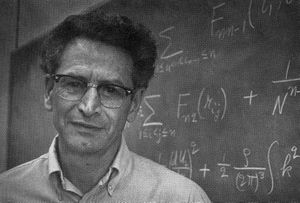
Born October 6, 1906 in Fort Smith, Arkansas, Eugene Feenberg received a B.A. in physics and M.A. in mathematics in 1929 from the University of Texas, Austin after three years of study. After a year and a half traveling in Europe as a Parker Traveling Fellow, visiting the groups of Sommerfeld, Pauli, and Fermi, he received his Ph.D. in 1933 from Harvard University, where his thesis advisor was E. C. Kemble. His thesis included the first statement and proof of the quantum optical theorem.
Subsequently Feenberg was Instructor or Fellow at Harvard, Wisconsin, and the Princeton Institute for Advanced Studies, during which time he collaborated with Wigner, Bardeen, Breit and Phillips among others. After eight years on the faculty of New York University and four years during World War II at Sperry Gyroscope, Feenberg joined the faculty of Washington University (St. Louis) in 1946, and in 1964 became the Wayman Crow Professor of Physics, a chair previously held by Arthur H. Compton, Arthur L. Hughes, and Edward U. Condon.
Much of Feenberg's early research was concerned with the theory of the nucleus, culminating in the publication of Shell Theory of the Nucleus by Princeton University Press in 1955. While he had a career-long interest in perturbation theory, he turned his primary focus to the theory of quantum fluids, most notably the helium liquids, toward the end of the 1950's, a subject to which he would contribute very importantly for the next two decades until his death in 1977 . Along with his students, he developed the method of correlated basis functions in order to deal with the strong, short-range repulsion between helium atoms that makes the theory of the helium fluids virtually intractable using ordinary perturbation theory. The early part of this research is the subject of his monograph Theory of Quantum Fluids (Academic Press, 1969).
His willingness to tackle the challenge of strong, short-range correlations by developing a theoretical, ab initio framework to deal with them from first principles, characterizes much of Feenberg's research. As important as his research is, his personal integrity and high principles continue to serve as an inspiration for his former students and colleagues. The awarding of the Eugene Feenberg Memorial Medal serves as an opportunity to commemorate and perpetuate this man's unique influence on physics and physicists.
It is noteworthy that Issue 1 of Volume 317 of the journal Nuclear Physics A, published on 2 April 1979, is an invited volume dedicated to the memory of Eugene Feenberg. As the opening editorial pages record: "The first issue of this volume (pp. 1-286) is composed of papers dedicated to the memory of the late Professor Eugene Feenberg." The issue then begins with an obituary, signed by Keith Brueckner, Chuck Campbell, John Clark, and Henry Primakoff, which ends with a list of Feenberg's publications. The obituary also includes a photograph of Feenberg in front of a chalkboard, which is reproduced here to the right.
The reader interested in more details of Feenberg's life and legacy may find some in a talk by John W. Clark, entitled The Legacy of Eugene Feenberg at the Centenary of His Birth, which is included in the Conference Proceedings of RPMBT-13. This article also includes a splendid photograph of Eugene Feenberg in conversation with Joseph Hirschfelder and Richard Norberg, which was taken in the Pfeiffer Physics Library during the 1974 Washington University symposium that celebrated Feenberg's career.
Kümmel Early Achievement Award
The International Advisory Committee responsible for the International Conference series on "Recent Progress in Many-Body Theories" and for awarding the Feenberg Medal, decided at the Thirteenth International Conference on Recent Progress in Many-Body Theories (RPMBT-13) in 2005 to establish a new award for young physicists whose published work is a significant contribution to quantum many-body theory. The Kümmel Award Rules are listed below.
The title of this award, "THE HERMANN KÜMMEL EARLY ACHIEVEMENT AWARD IN MANY-BODY PHYSICS", honors Prof. Kümmel's long and distinguished career as a leader in the field and as a mentor for younger generations. It should be noted that Prof. Kümmel, together with Prof. Raymond Bishop, received the Feenberg Memorial Medal in 2005 for development of the coupled cluster method.
A full list of Kümmel Awardees is given below, together with their respective citations.
List of Kümmel Awardees and their Citations
| NAME OF WINNER | YEAR OF AWARD | MEETING OF AWARD | CITATION |
| Frank VERSTRAETE | 2007 | RPMBT14; Barcelona [cttee chaired by Susana Hernández] | "for his pioneering work on the use of quantum information and entanglement theory in formulating new and powerful numerical simulation methods for use in strongly correlated systems, stochastic nonequilibrium systems, and strongly coupled quantum field theories" |
| Joaquin DRUT | 2009 | RPMBT15; Columbus [cttee chaired by Mikko Saarela] | "for establishing the thermodynamic and pairing properties of a dilute spin-1/2 Fermi gas in the unitary regime using Quantum Monte Carlo and Field Theory methods" |
| Xiao-Liang QI | 2011 | RPMBT16; Bariloche [cttee chaired by Gerardo Ortiz] | "for his contribution to the topological field theory of topological insulators" |
| Max METLITSKI | 2013 | RPMBT17; Rostock [cttee chaired by Ray Bishop] | "for remarkable advances in the theory of quantum criticality in metals" |
| Lianyi HE | 2015 | RPMBT18; Buffalo [cttee chaired by Joe Carlson] | "for pioneering work in the many-body theory of QCD at high isospin density and in the simulations of gauge fields in cold atoms" |
| Guy COHEN | 2017 | RPMBT19; Pohang [cttee chaired by Heidi Reinholz] | "for the development and implementation of novel algorithms for nonequilibrium and equilibrium quantum many-body physics" |
| Timothy BERKELBACH | 2019 | RPMBT20; Toulouse [cttee chaired by Joaquin Drut] | "for making possible the determination of condensed phase spectra within the framework of coupled cluster theory, and for elucidating the relationship between excited-state coupled cluster theory and Green’s function diagrammatic approximations" |
| Aavishkar PATEL | 2022 | RPMBT21; Chapel Hill [cttee chaired by Cristian Batista] | "for outstanding contributions to the theory of transport in non-Fermi liquids" |
Photograph Gallery of Kümmel Awardees
List of those receiving Honourable Mentions for the Kümmel Award and their citations
Selection Committees for the Hermann Kümmel Early Achievement Award have often also been deeply impressed by the achievements of other nominees. Since the Award may not be split, they have sometimes wished, however, to congratulate those who narrowly missed winning the Award in a given round by giving them Honourable Mentions. A full list of those is given below, together with their citations.
| NAME | YEAR OF HONOURABLE MENTION | MEETING AT WHICH MENTIONED | CITATION |
| Gregory ASTRAKHARCHIK | 2007 | RPMBT14; Barcelona [cttee chaired by Susana Hernández] | "for his most accurate microscopic calculation of the BEC-BCS crossover in dilute Fermi gases using quantum Monte Carlo techniques whose predictions have been recently confirmed by experiments" |
| Robert ZILLICH | 2007 | "for defining future directions of quantitative many-body theory by combining correlated basis functions methods with large scale Quantum Monte Carlo simulations to explore yet uncharted areas of strongly correlated quantum fluids physics" | |
| Martin ECKSTEIN | 2013 | RPMBT17; Rostock [cttee chaired by Ray Bishop] | "for his leading contributions in the development of non-equilibrium dynamical mean field theory" |
| Emanuel GULL | 2013 | "for the development of the Continuous-Time Auxiliary-Field Quantum Monte Carlo Method and for its use in understanding the interplay of the pseudogap and superconductivity in the Hubbard model" | |
| Kai SUN | 2013 | "for seminal contributions to the theory of topological effects in strongly correlated electron systems" | |
| Gustav JANSEN | 2017 | RPMBT19; Pohang [cttee chaired by Heidi Reinholz] | "for his seminal contributions to our understanding of many-body theories, in particular for the development of multi-reference coupled cluster theory and for consistent derivations of many-body operators for nuclear systems" |
| Jacopo DE NARDIS | 2017 | "for fundamental progress on the post-quench dynamics of strongly correlated quantum systems" |
Photograph Gallery of those receiving Honourable Mentions for the Kümmel Award
Kümmel Award Rules
TITLE: Hermann Kümmel Early Achievement Award in Many-Body Physics
PURPOSE: To encourage and reward excellence in the field of Quantum Many-Body Theory. The awardee will be selected on the basis of outstanding published work that has been recognised as comprising a significant advance in the field.
PRESENTATION: The award will be presented at the International Conference on Recent Progress in Many- Body Theories, to which the awardee will be invited to deliver a plenary talk. The local expenses plus the conference registration fee will be paid for the awardee to the same extent as for other invited speakers.
FREQUENCY: One award, which may not be split among more than one awardee, will be made at each meeting in the Series of International Conferences on Recent Progress in Many-Body Theories.
NOMINATIONS: Nominations should be forwarded to the Selection Committee by the established deadline, after a call issued by the committee. Nominations should include:
- A brief description of the achievement contained in the work for which the award is to be considered, highlighting its importance to the field of quantum many-body theory and the original contributions of the nominee
- A proposed citation for the award
- A curriculum vitae of the nominee
- A list of up to 3 relevant refereed publications that describe the work
- No more than 3 letters of support.
CANDIDATES: Each candidate for the award must normally have received his or her PhD within a period of 6 years prior to the closing date for nominations.
Brief Biography of Hermann Kümmel
Hermann Kümmel was born in 1922 in Berlin. After obtaining his Diploma degree in 1950 from Humboldt University in East Berlin, he received the Ph.D. in Theoretical Physics from the Free University in West Berlin, where he continued with his research until moving to Iowa State University in Ames, Iowa, USA as a research associate. It was during his two years in Ames that, in collaboration with Fritz Coester, the foundations were laid for the birth of the coupled cluster method (CCM) for which he later became renowned. In 1960, Professors Kümmel and Coester published their seminal ideas of the CCM in the journal Nuclear Physics. After periods at the University of Tübingen, the Max Planck Institute for Nuclear Chemistry in Mainz and the University of Mainz, and at Oklahoma State University as Professor of Physics, Professor Kümmel returned to Mainz as senior scientist at the Max Planck Institute, where he built a strong research group, and Adjunct Professor at the University of Mainz.
In 1969 Professor Kümmel moved with his entire research group to a Chair in Physics at the newly established Ruhr University in Bochum (RUB), Germany, where he established RUB as one of the world's leading centers in quantum many-body theory. In particular, it was at this time that he turned his attention to the theoretical development and computational application of the CCM to nuclear systems specifically and fermionic systems in general. The level of sophistication achieved in Bochum under his leadership, in both formal and computational strength, has rarely been matched elsewhere.
He retired in 1988 at the mandatory retirement age, retaining his association with RUB as Professor Emeritus. To mark his achievements in the field he was also elected as the first Honorary President of the International Advisory Committee for this RPMBT series of international conferences.
The reader interested in more details of Kümmel's life and legacy may find some in a talk entitled A Tribute to Hermann Kümmel on his 80th Birthday, which is included in the Conference Proceedings of RPMBT-11.
